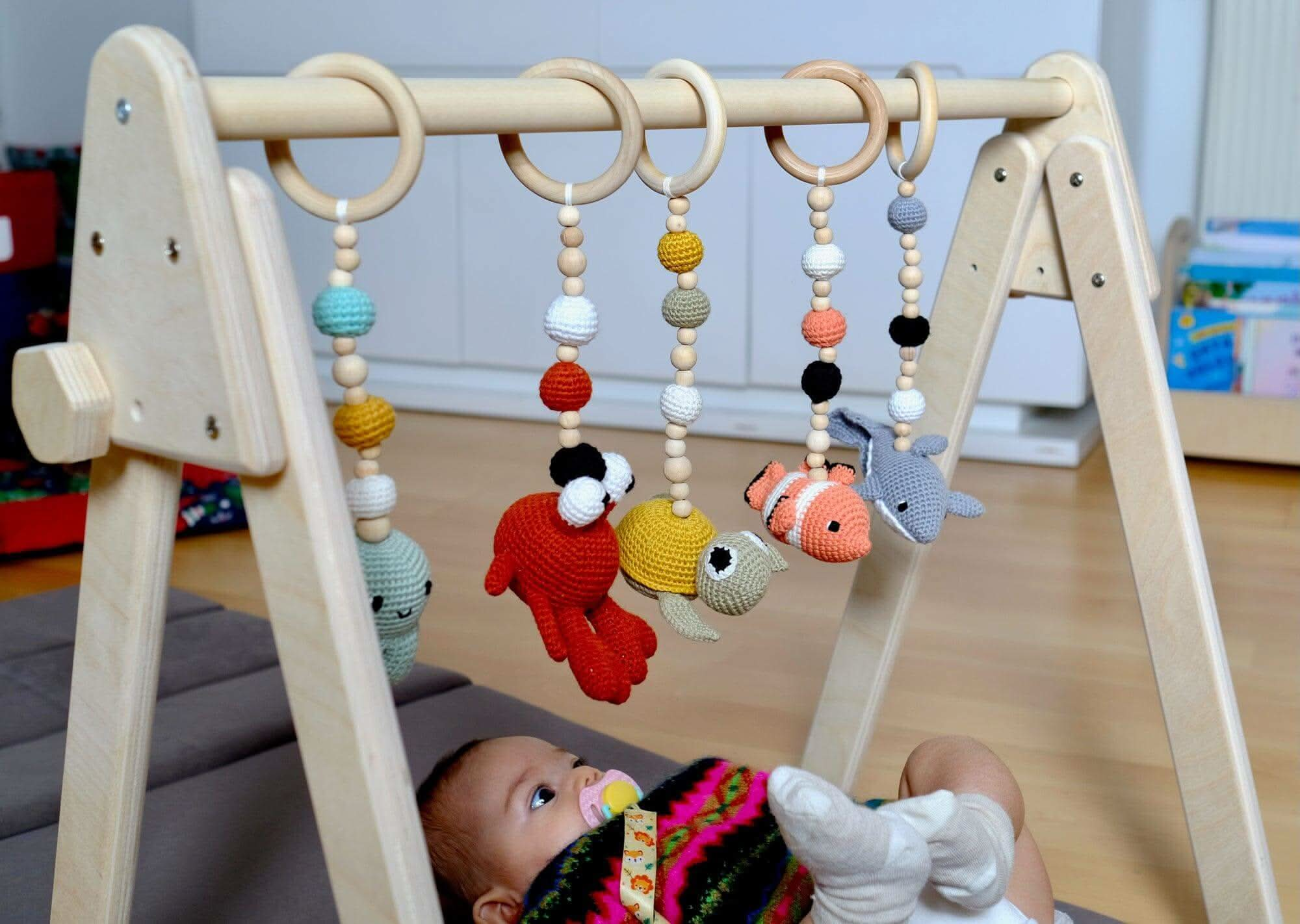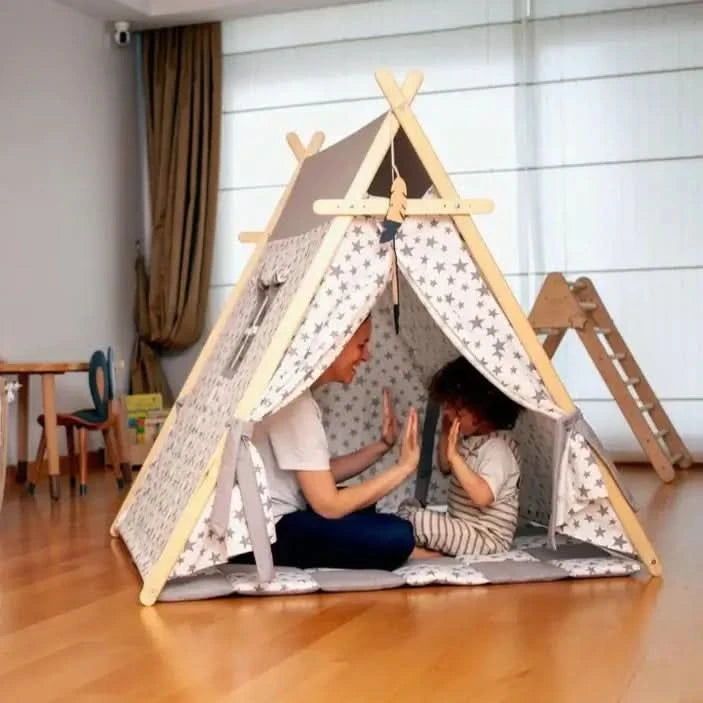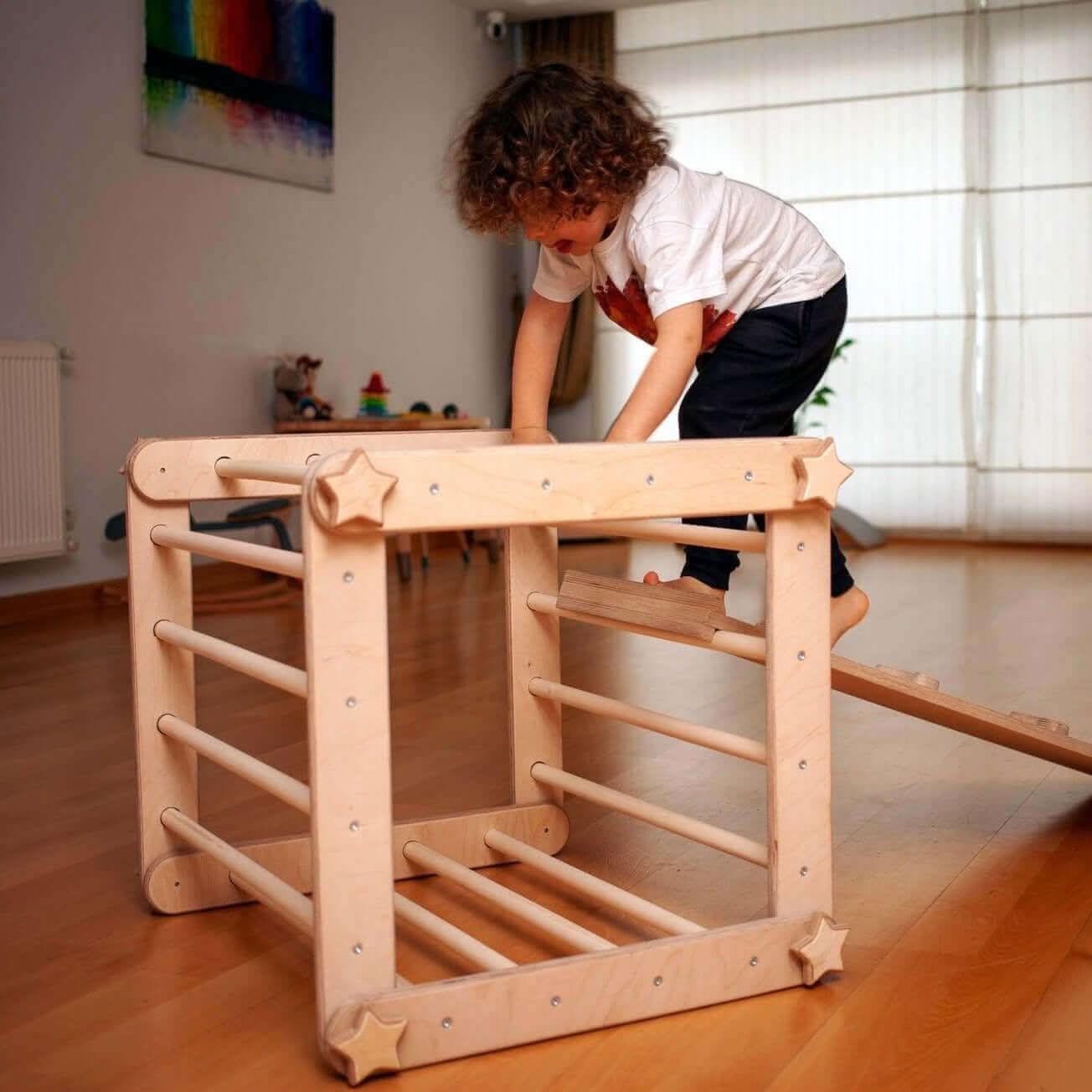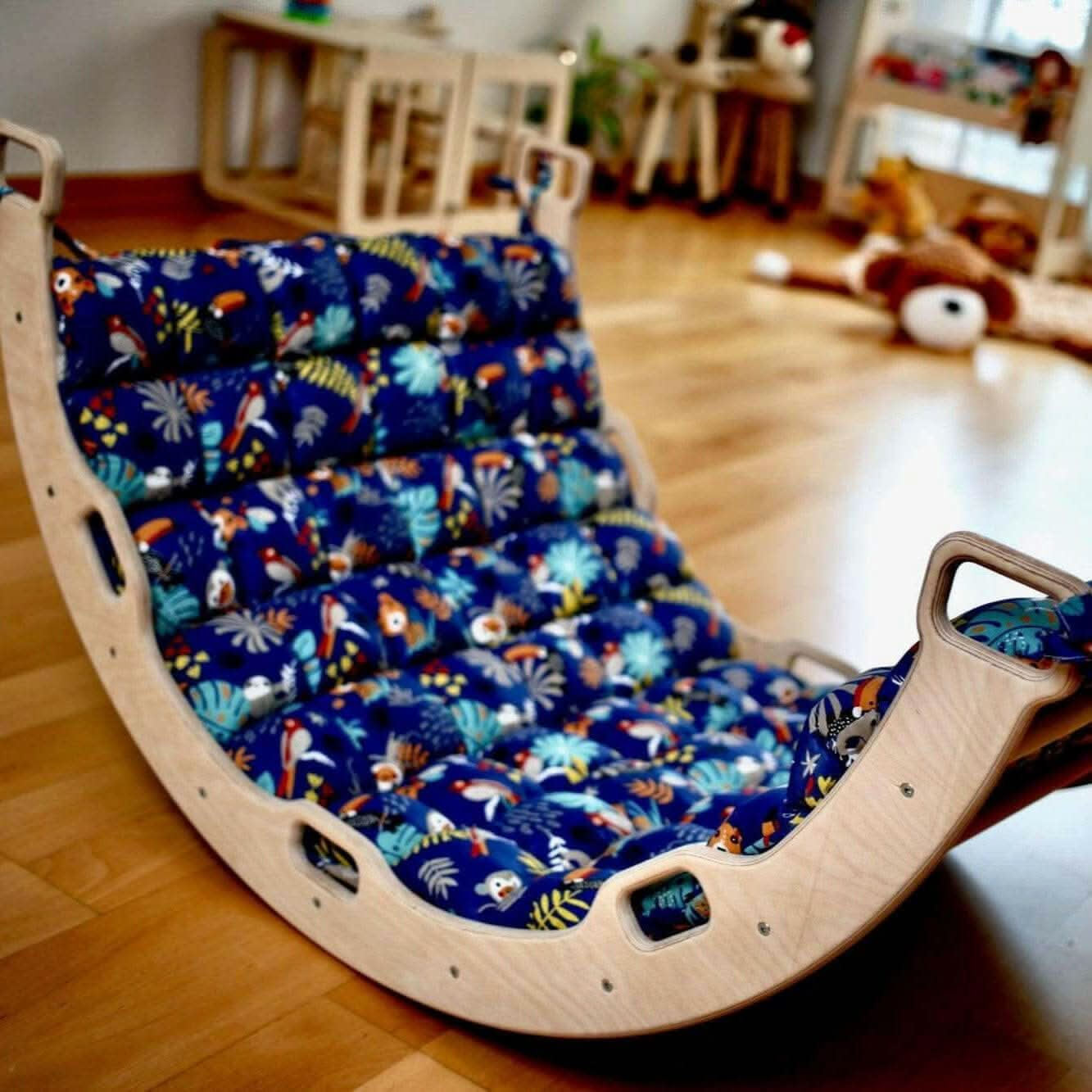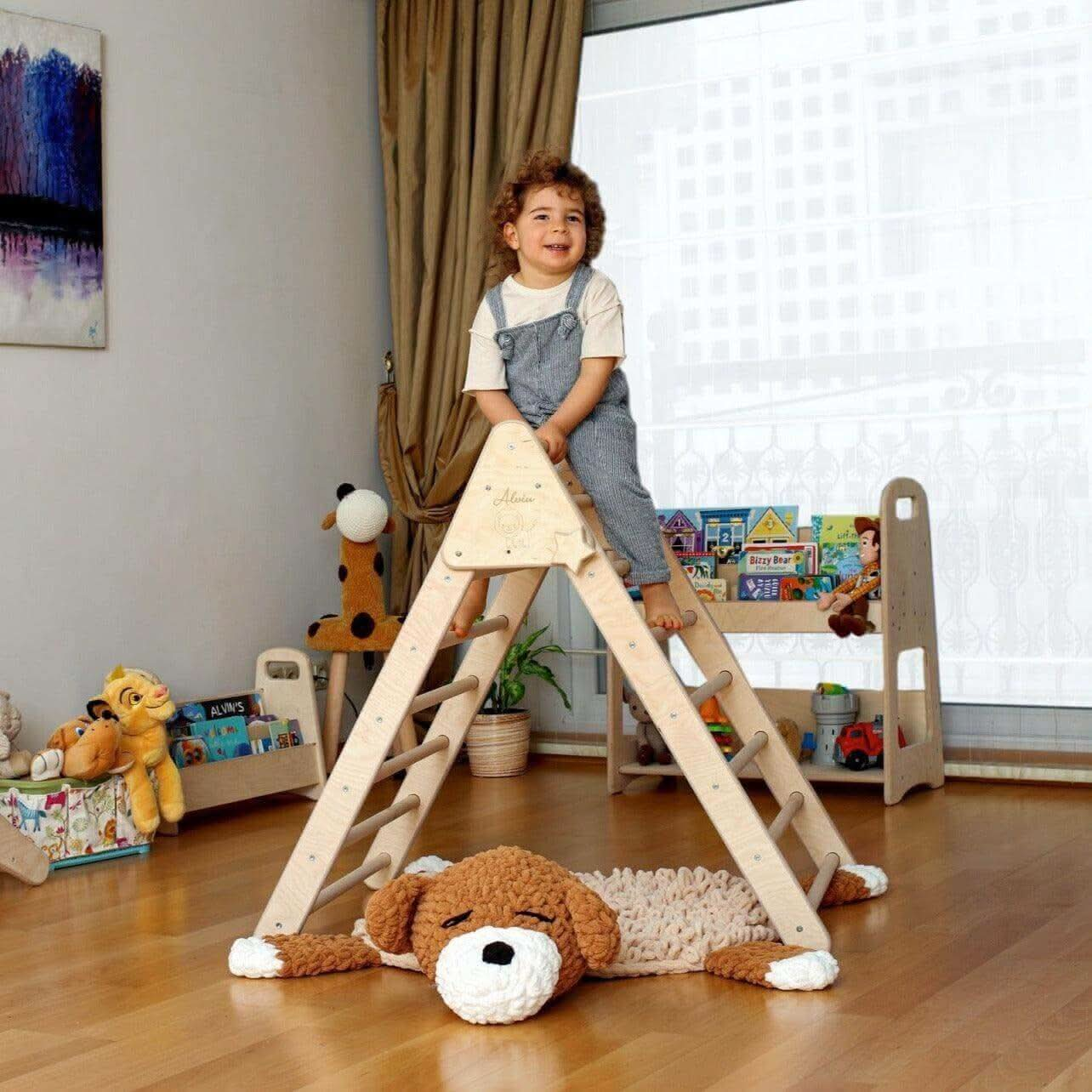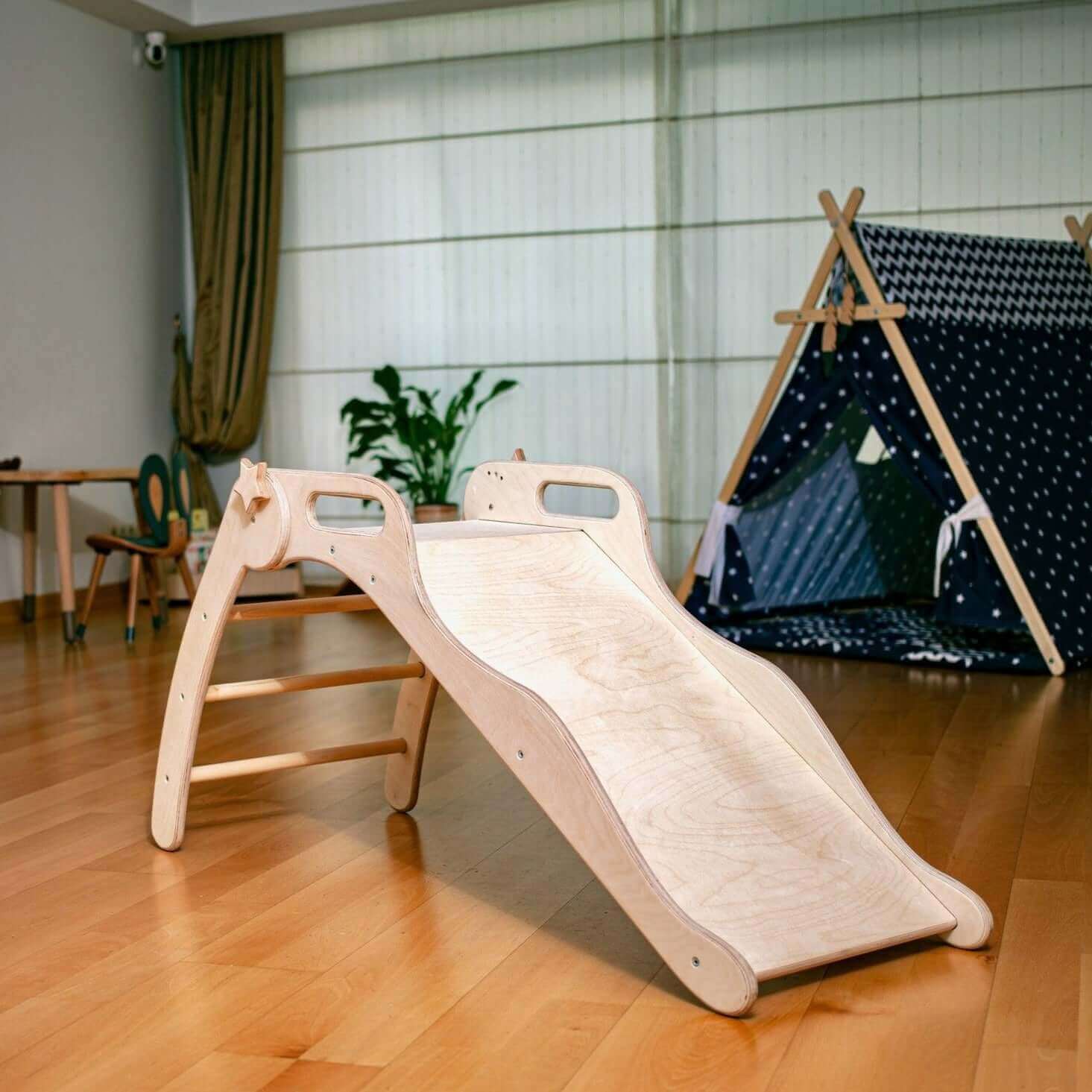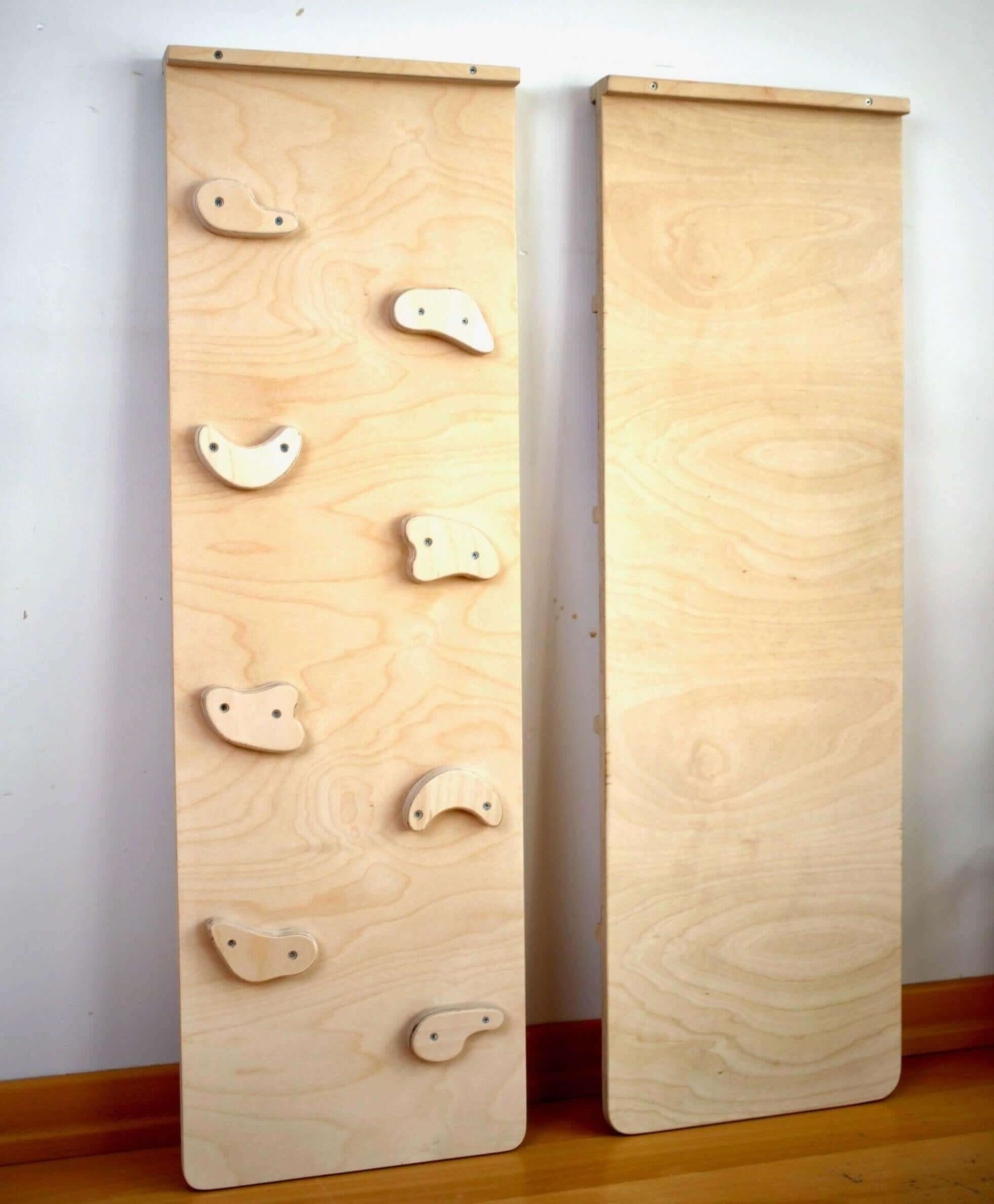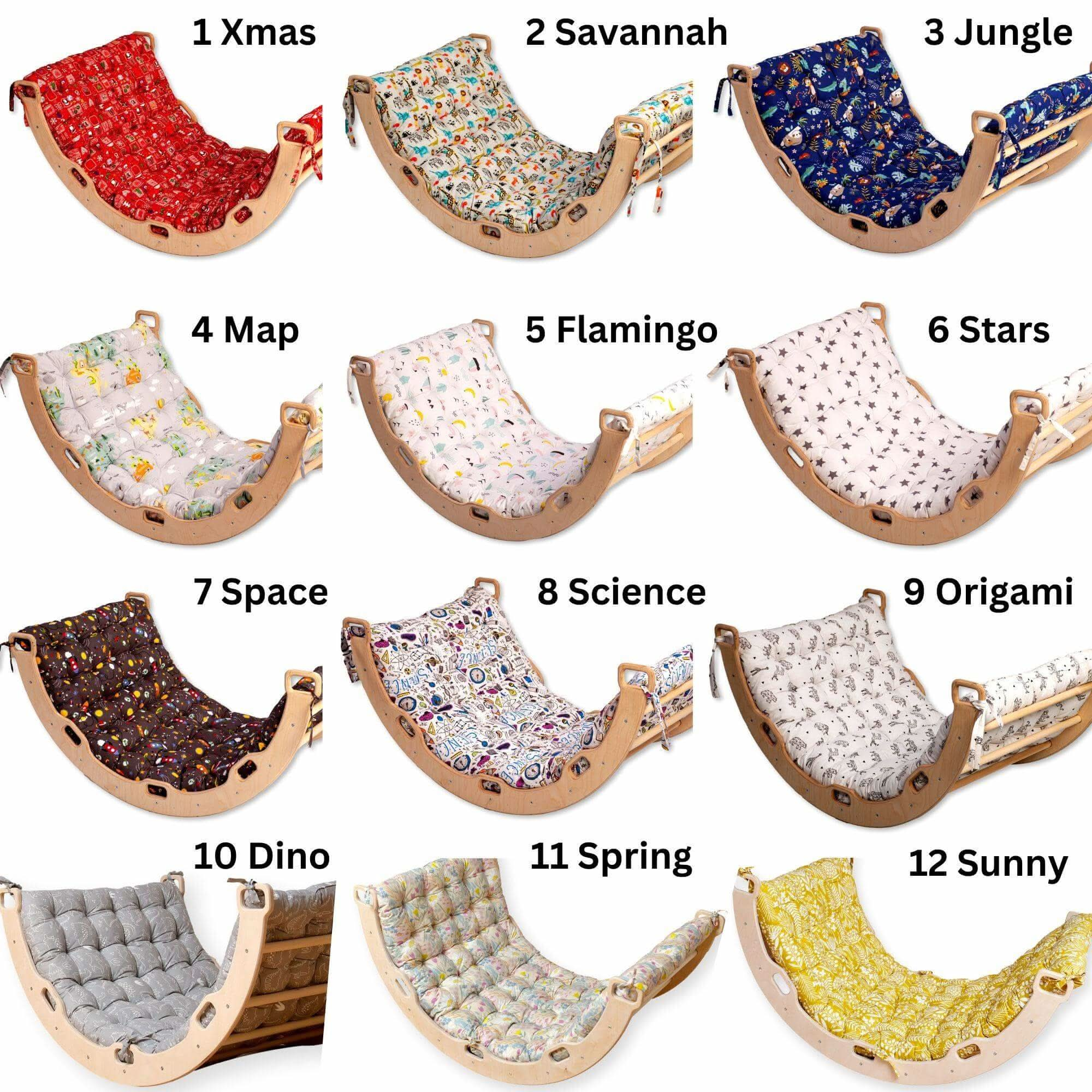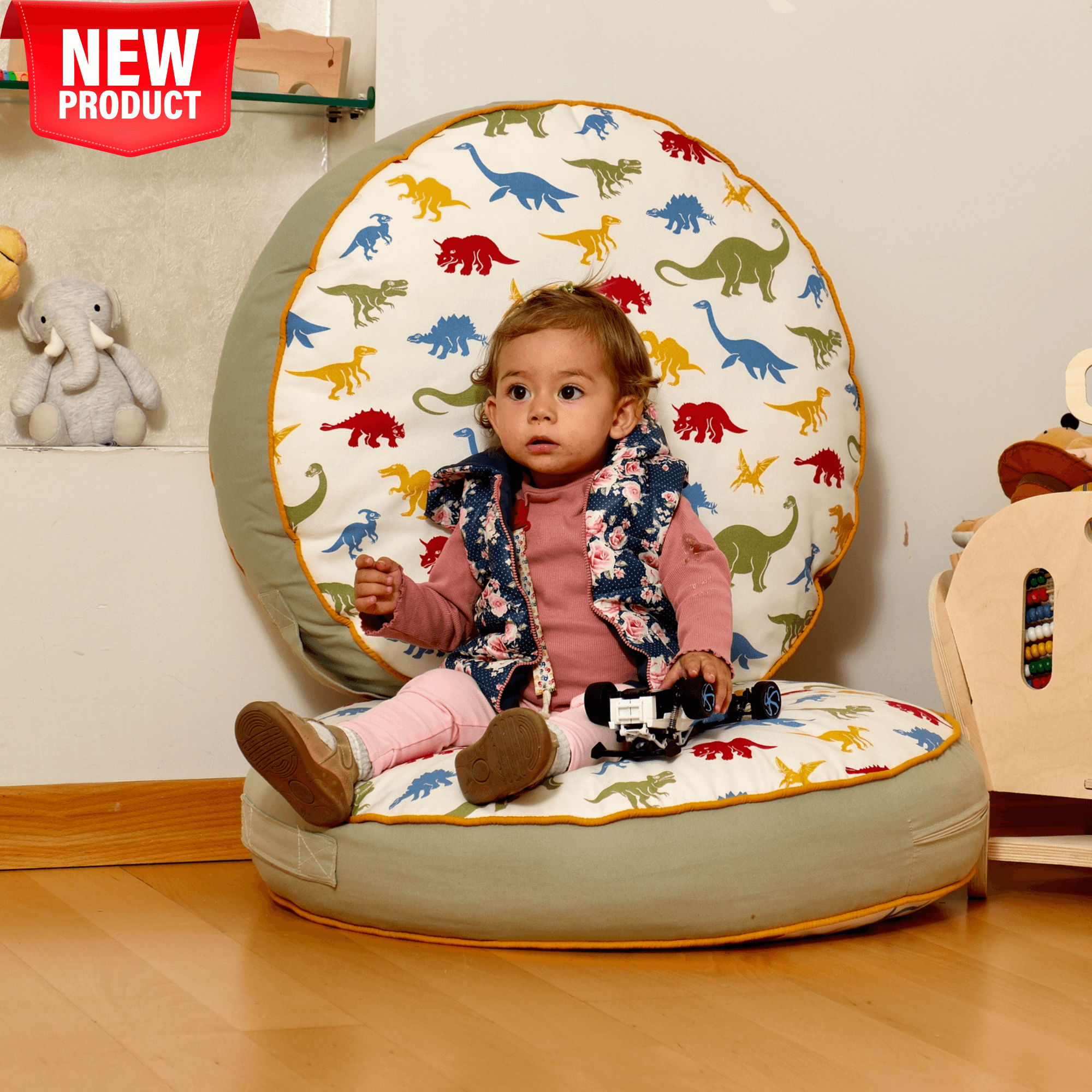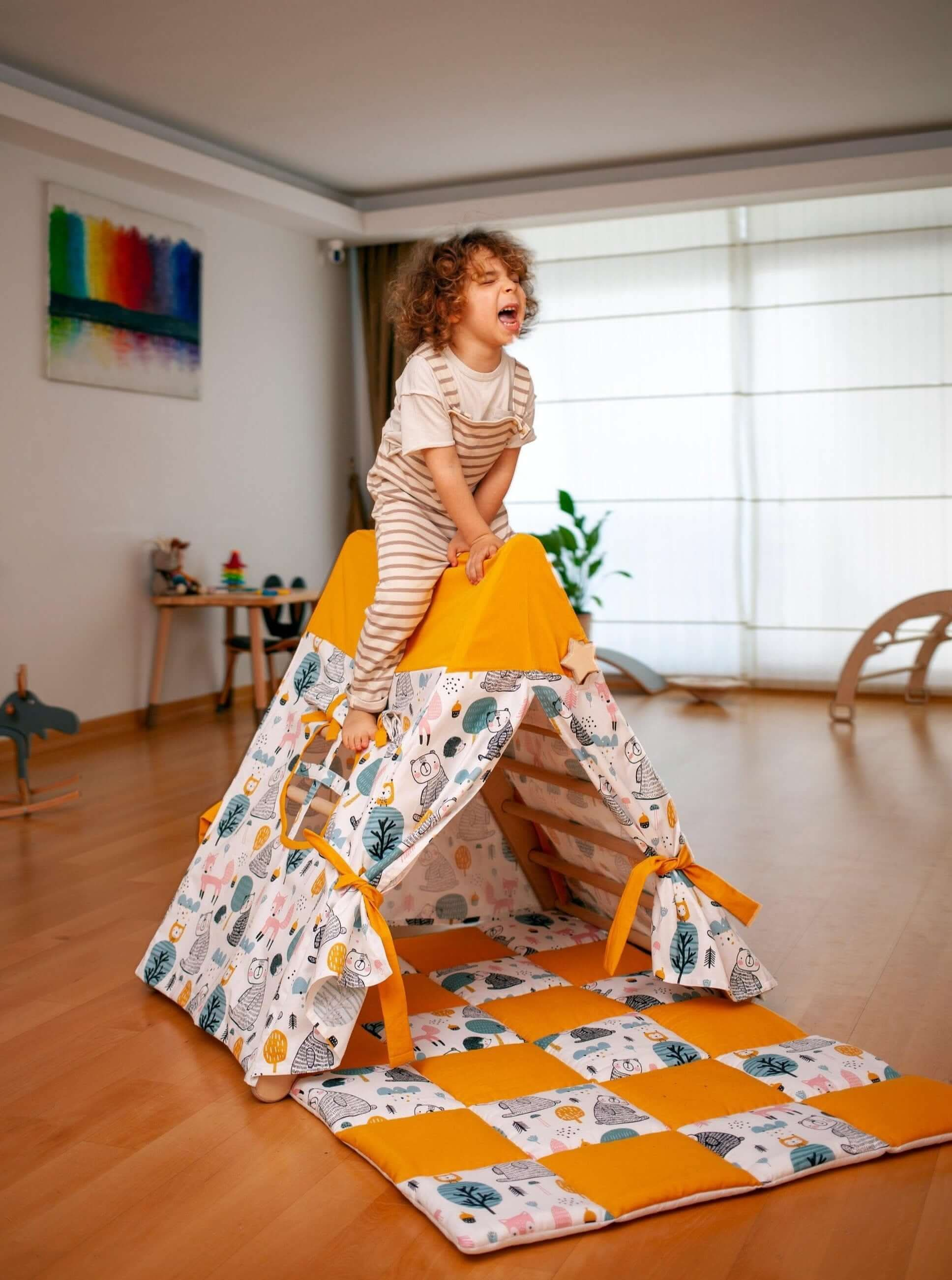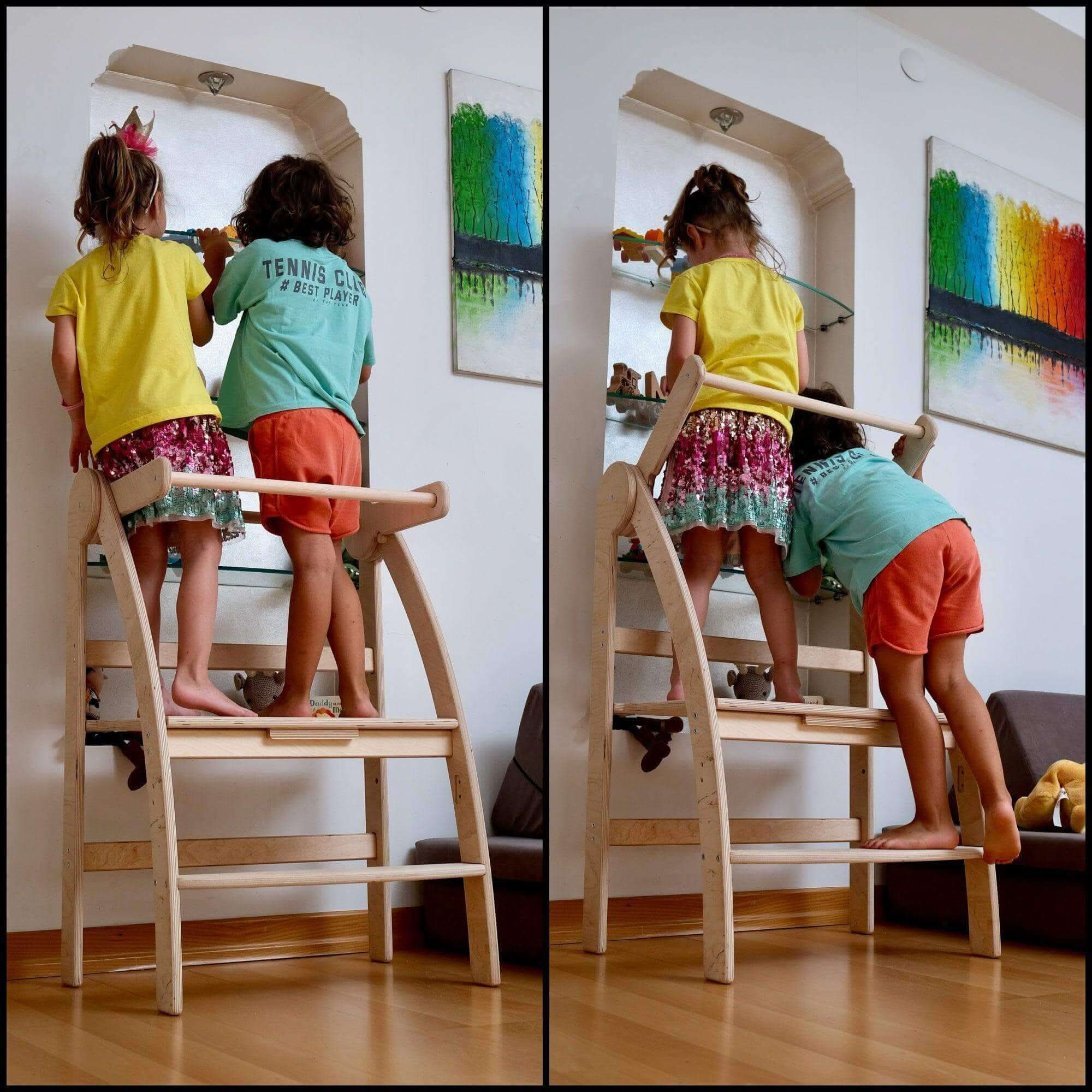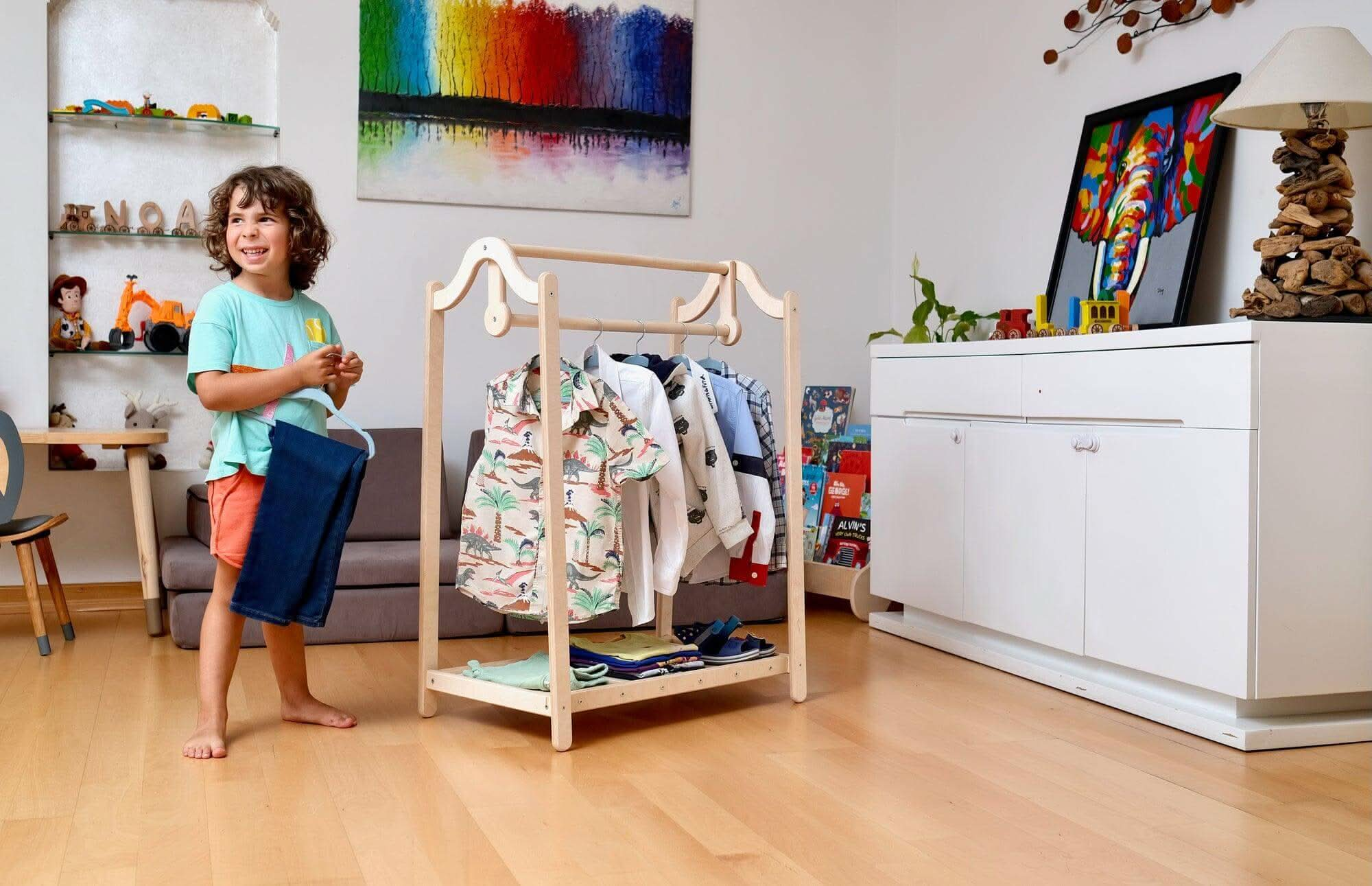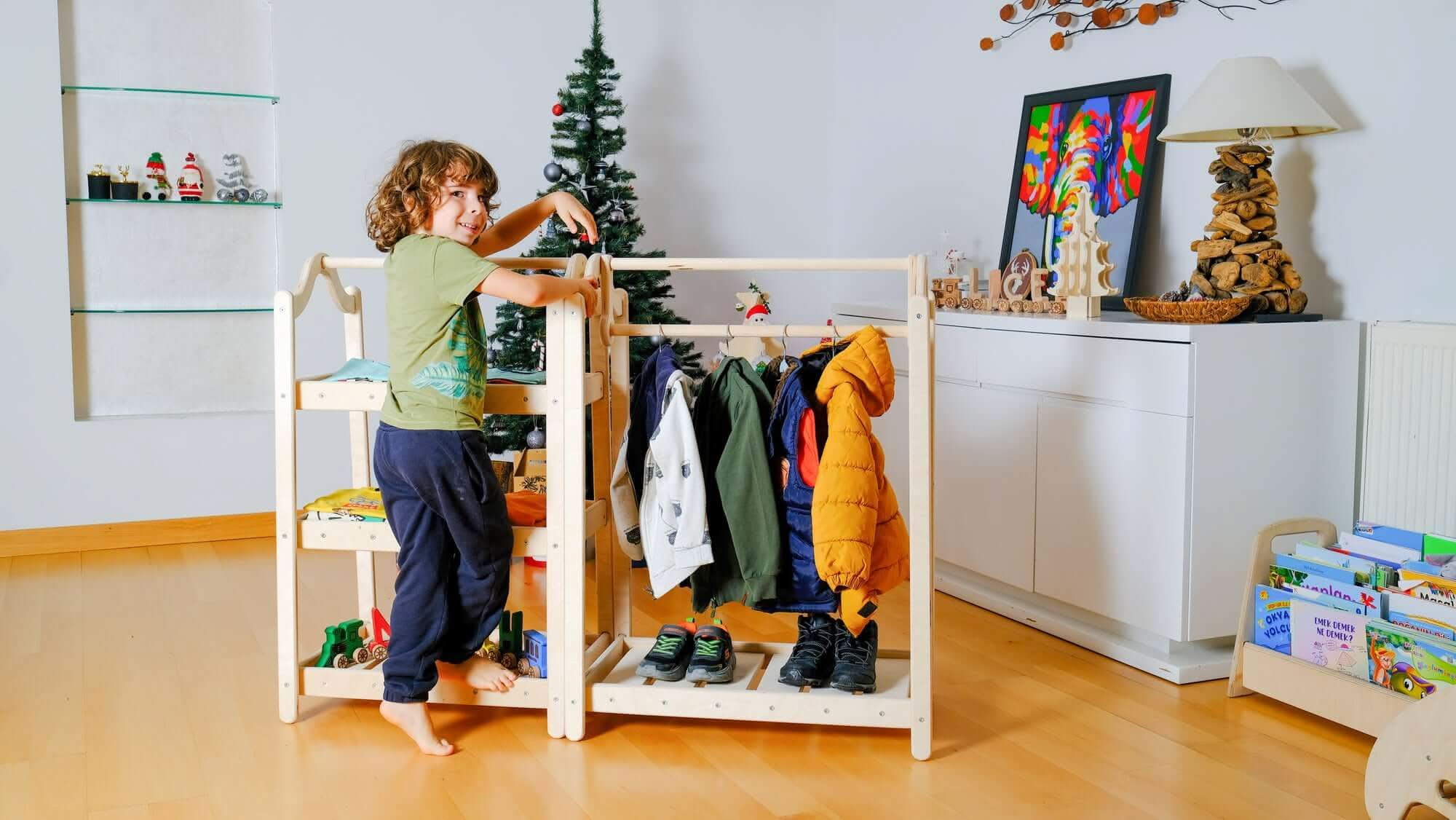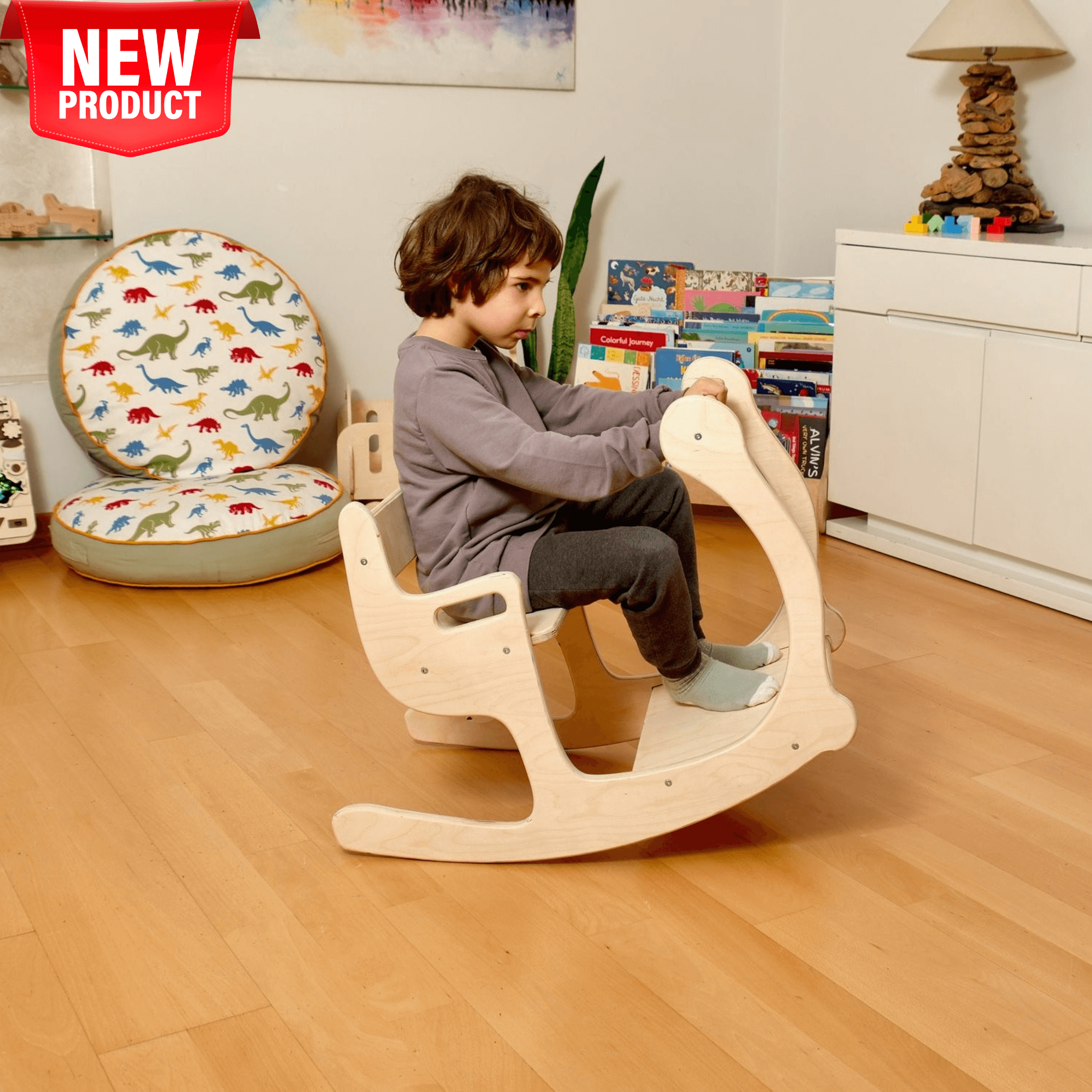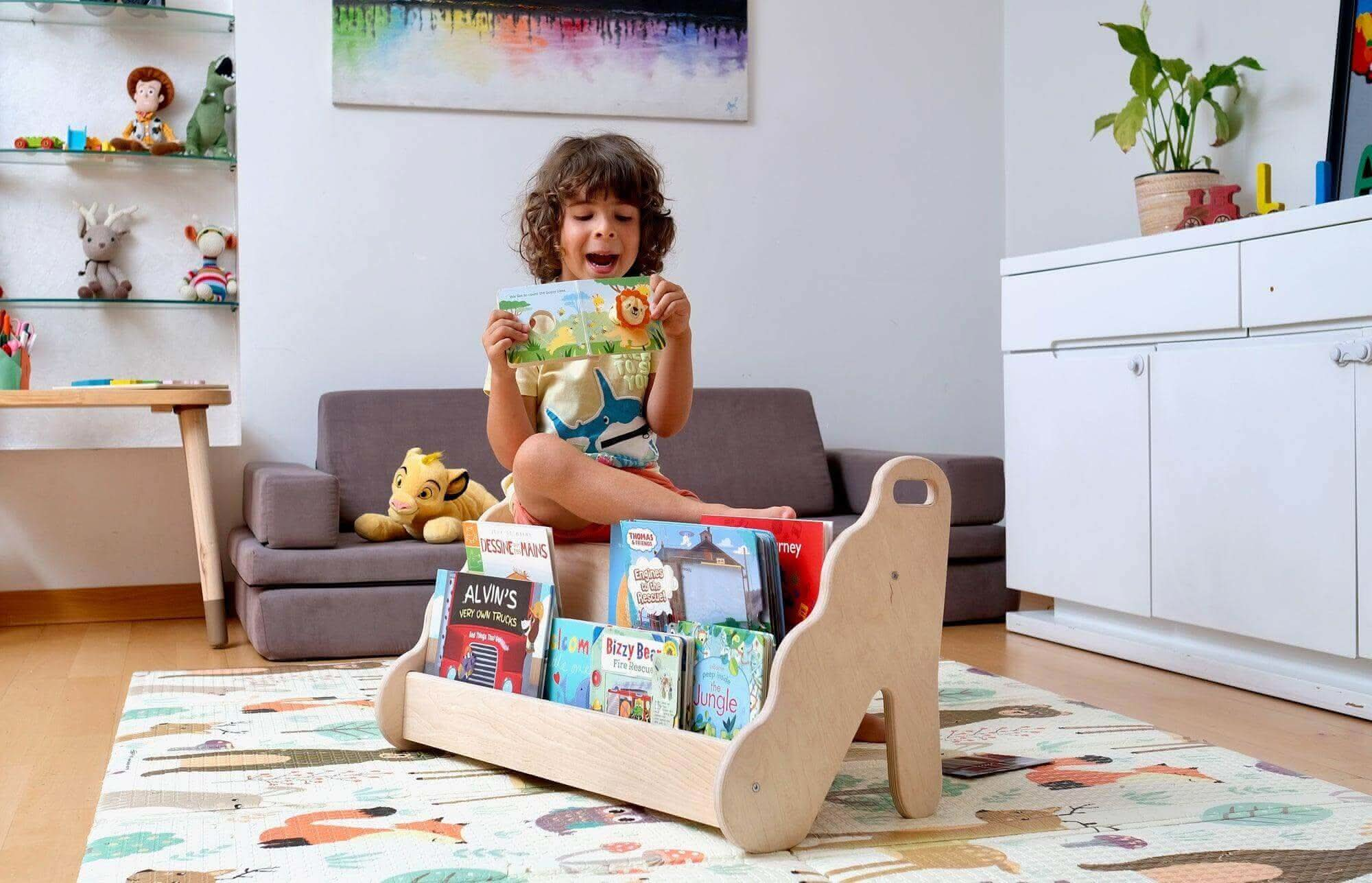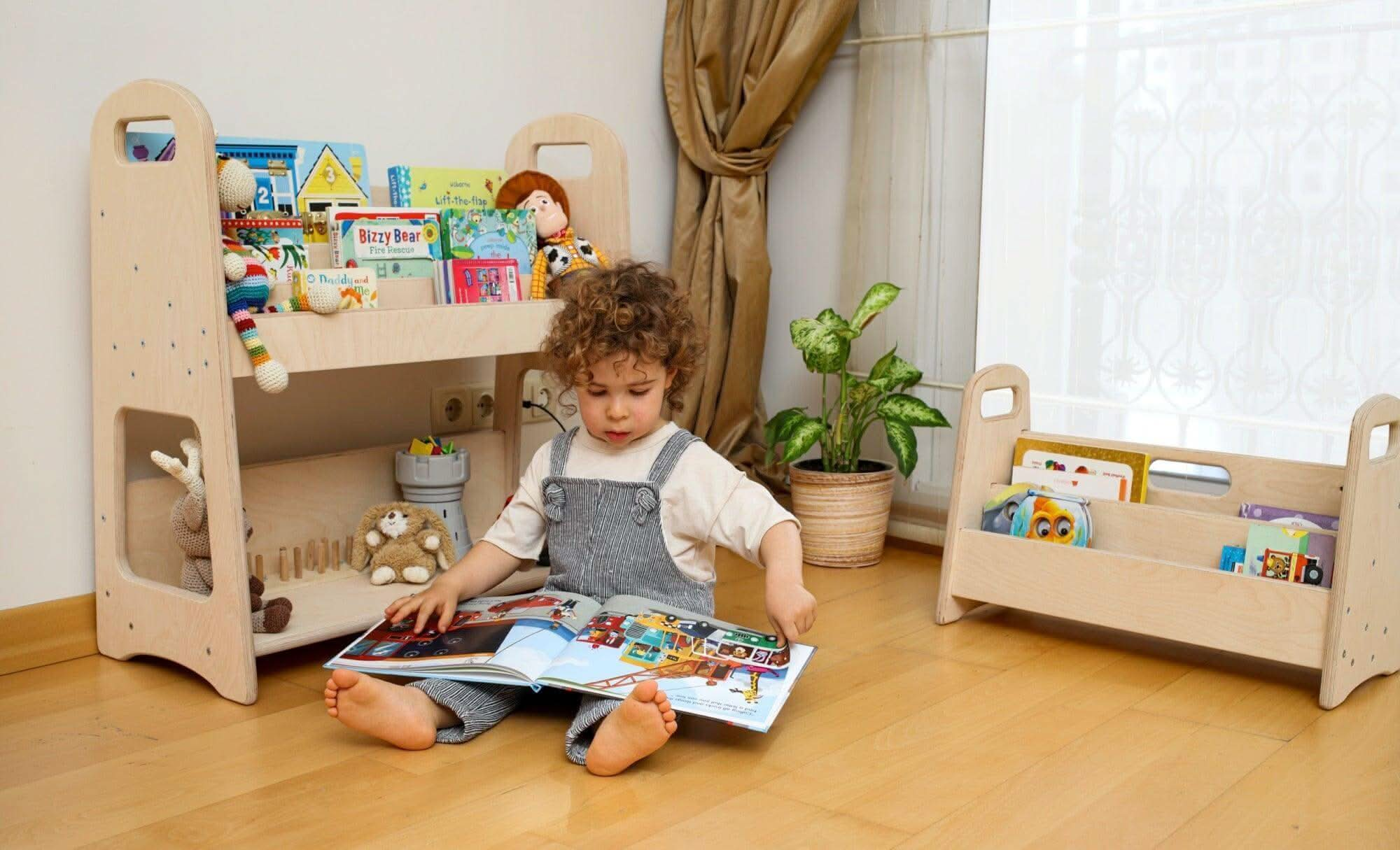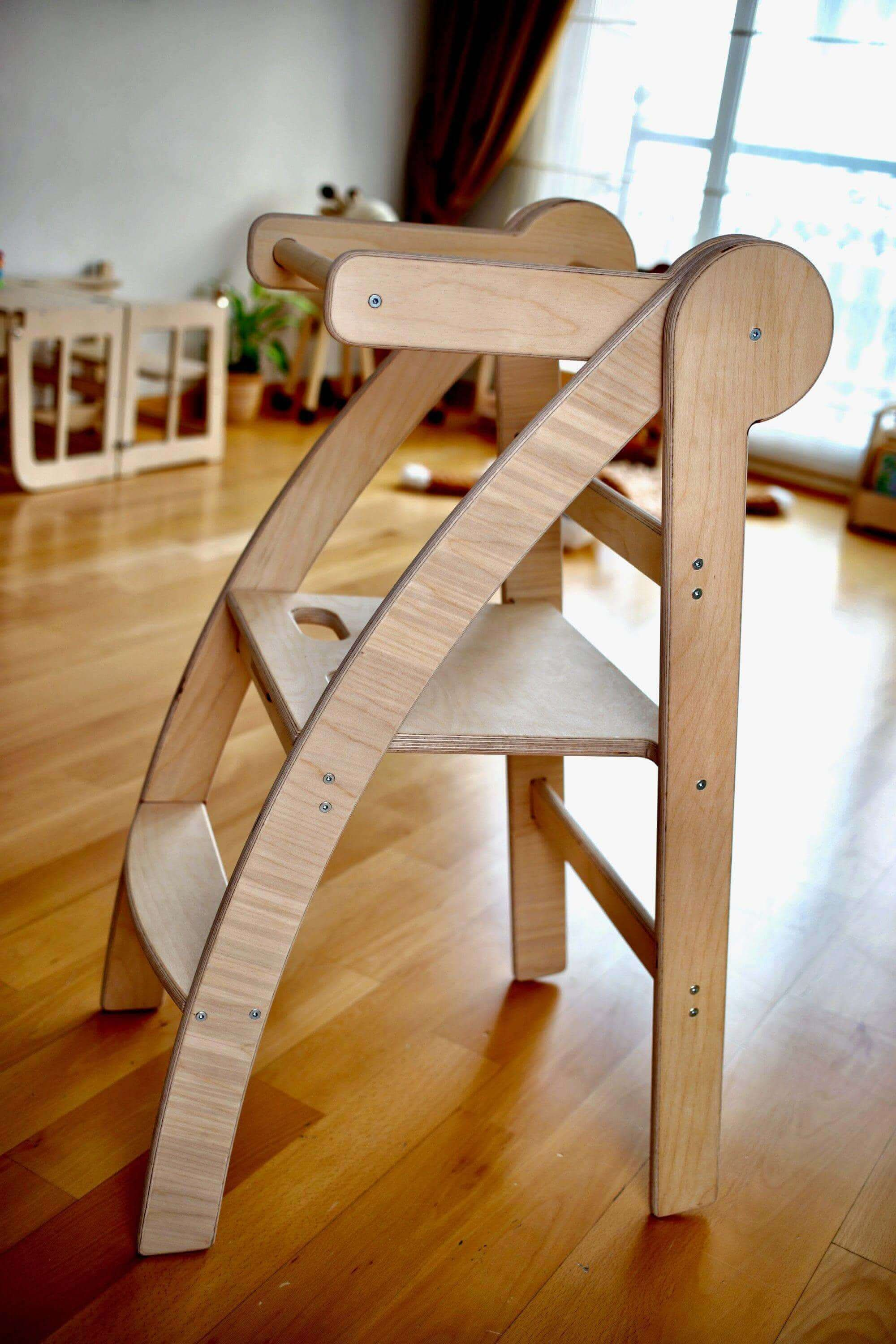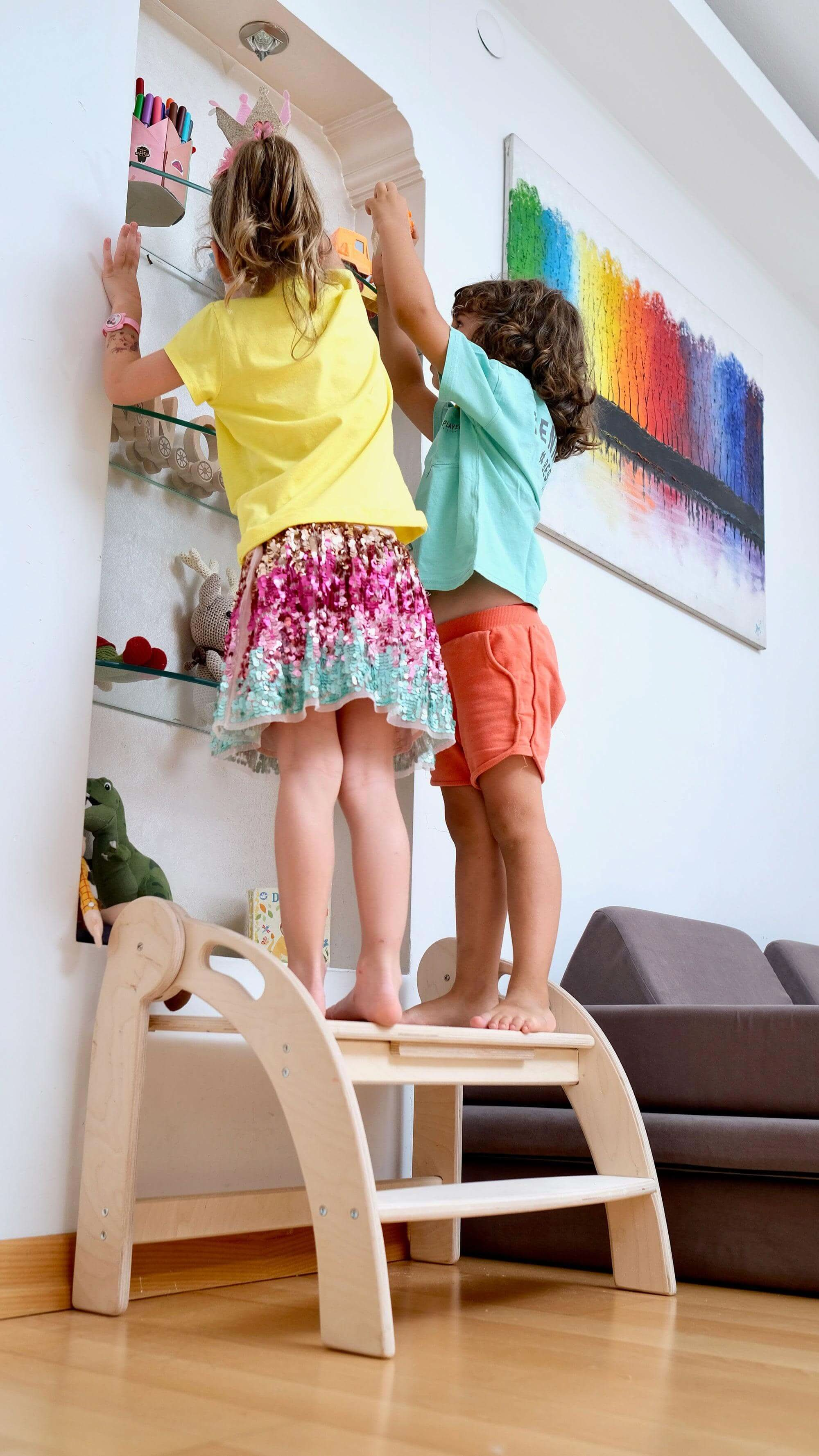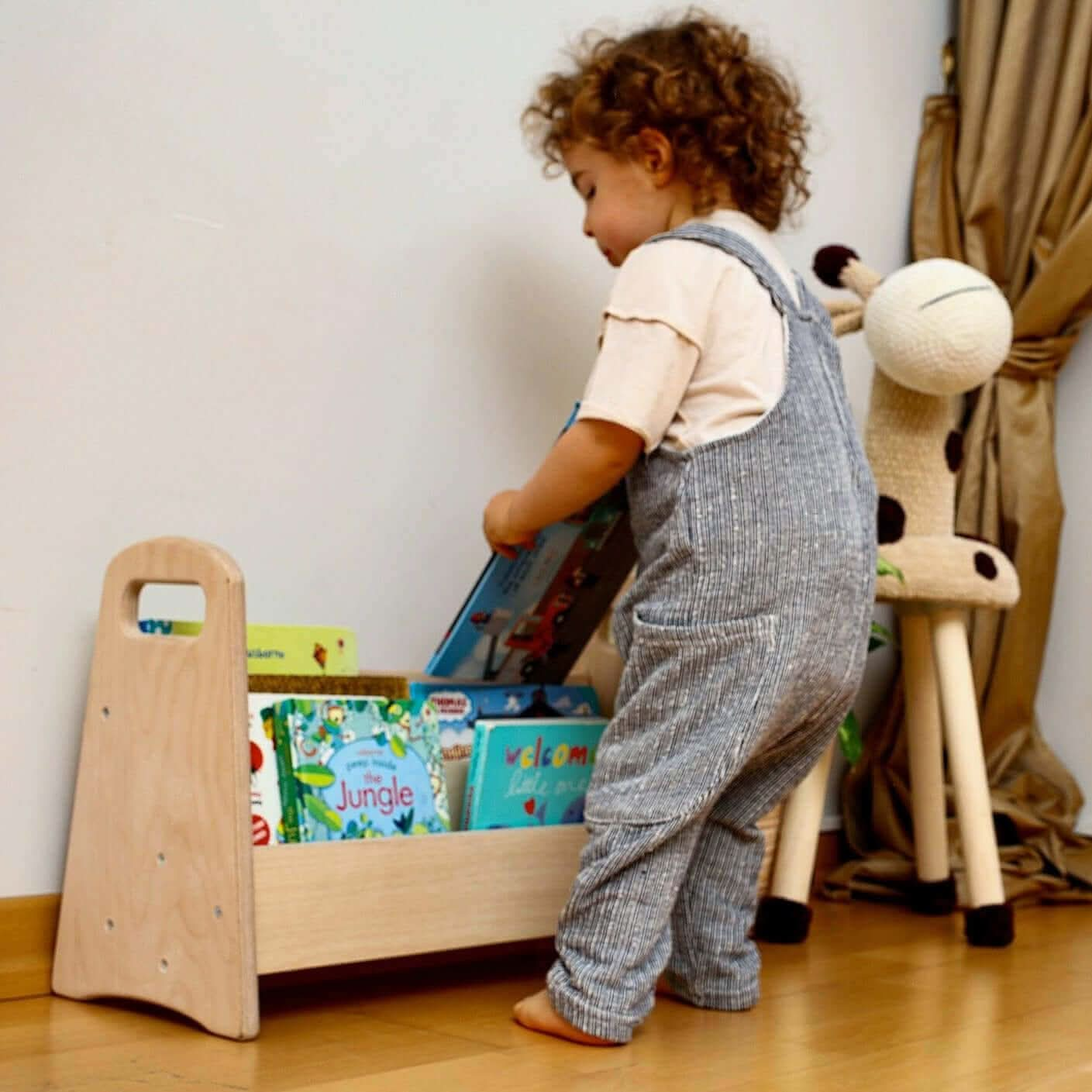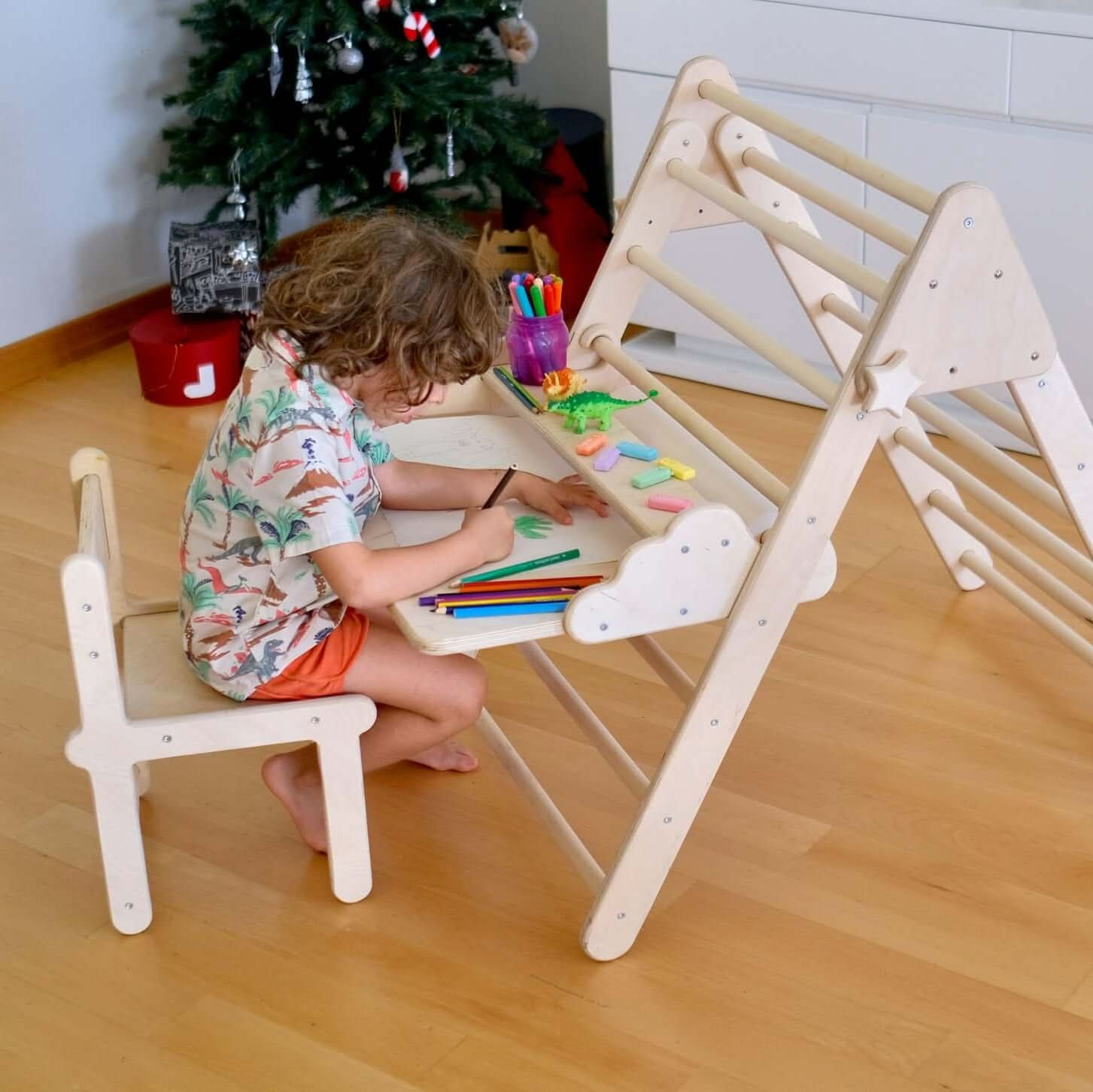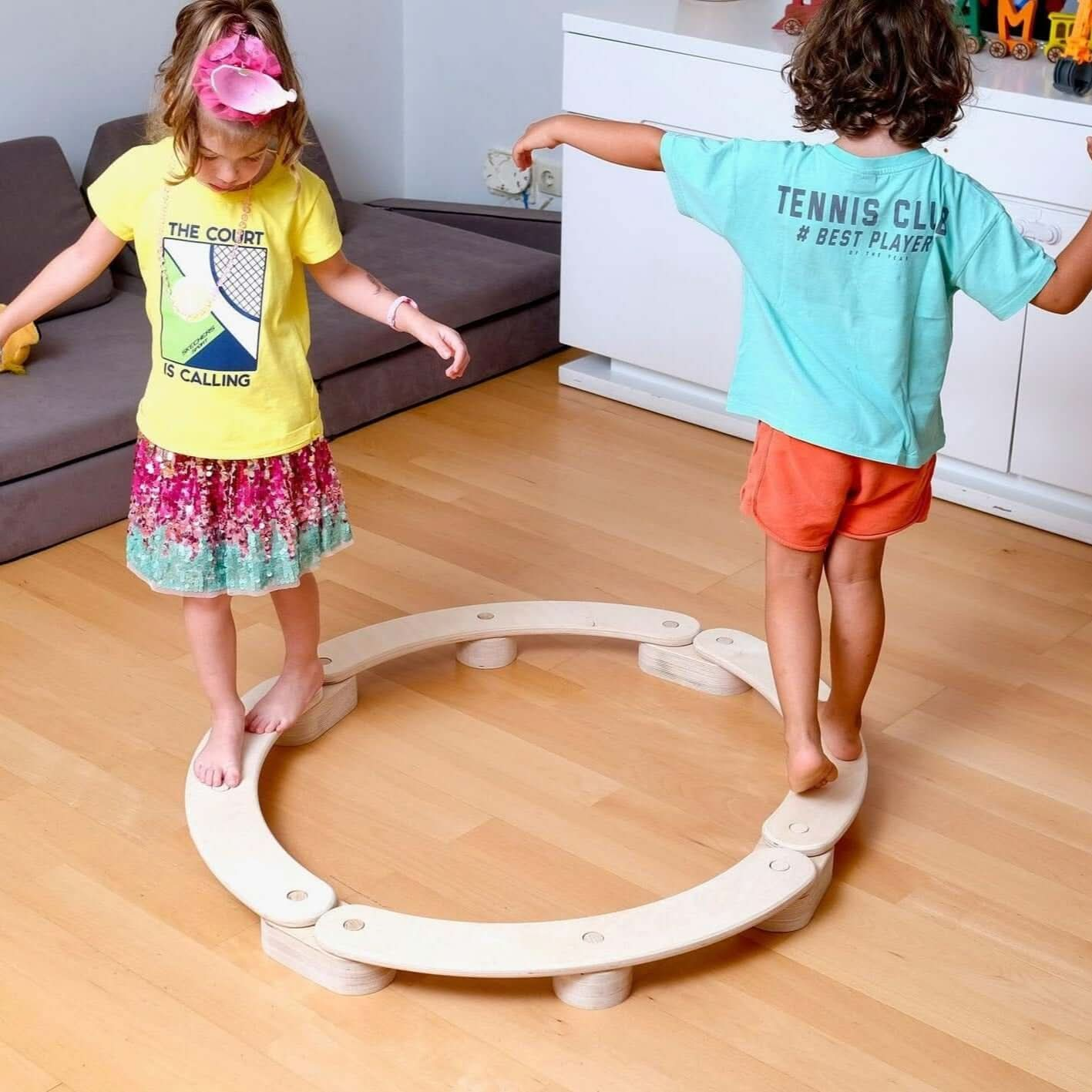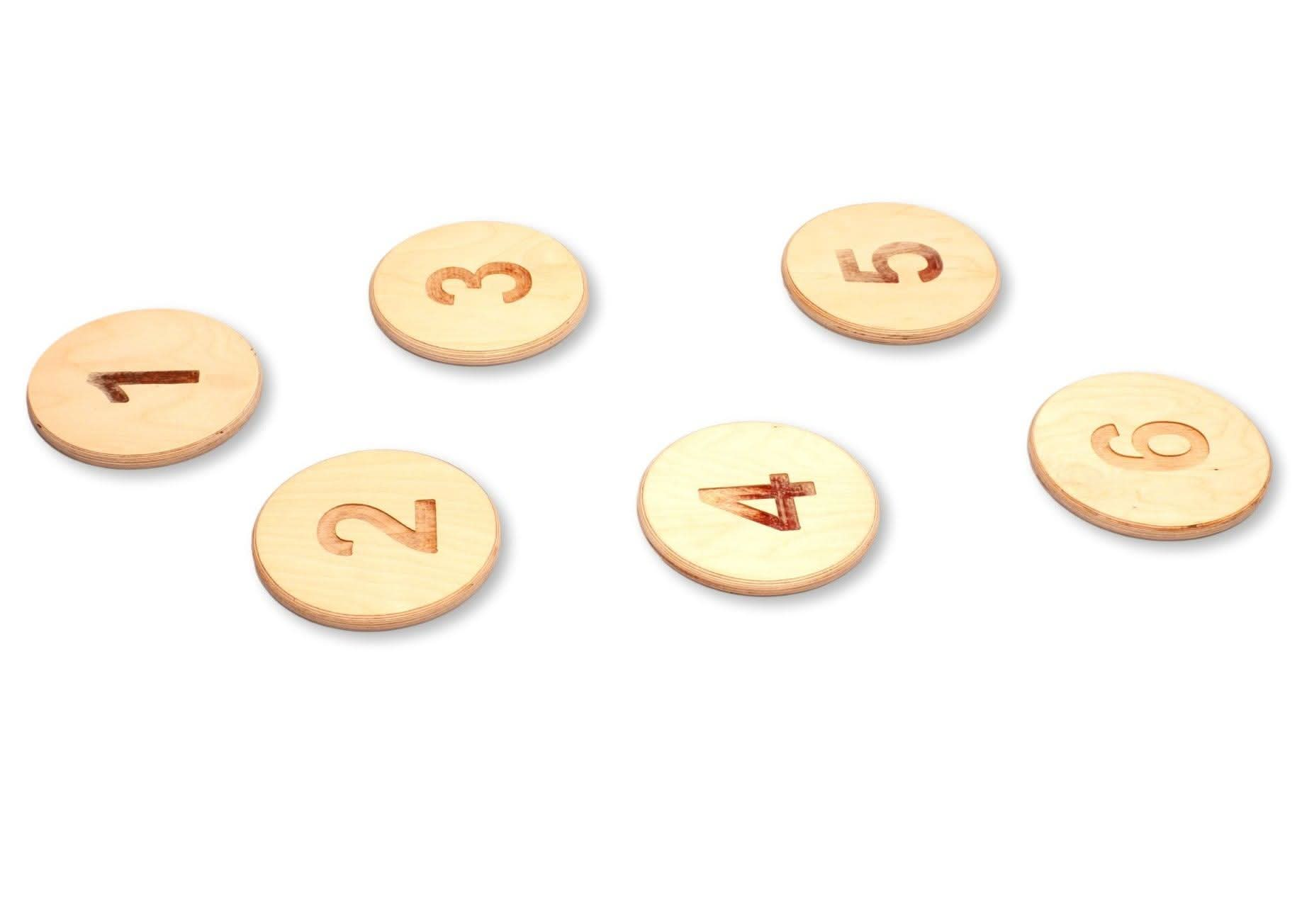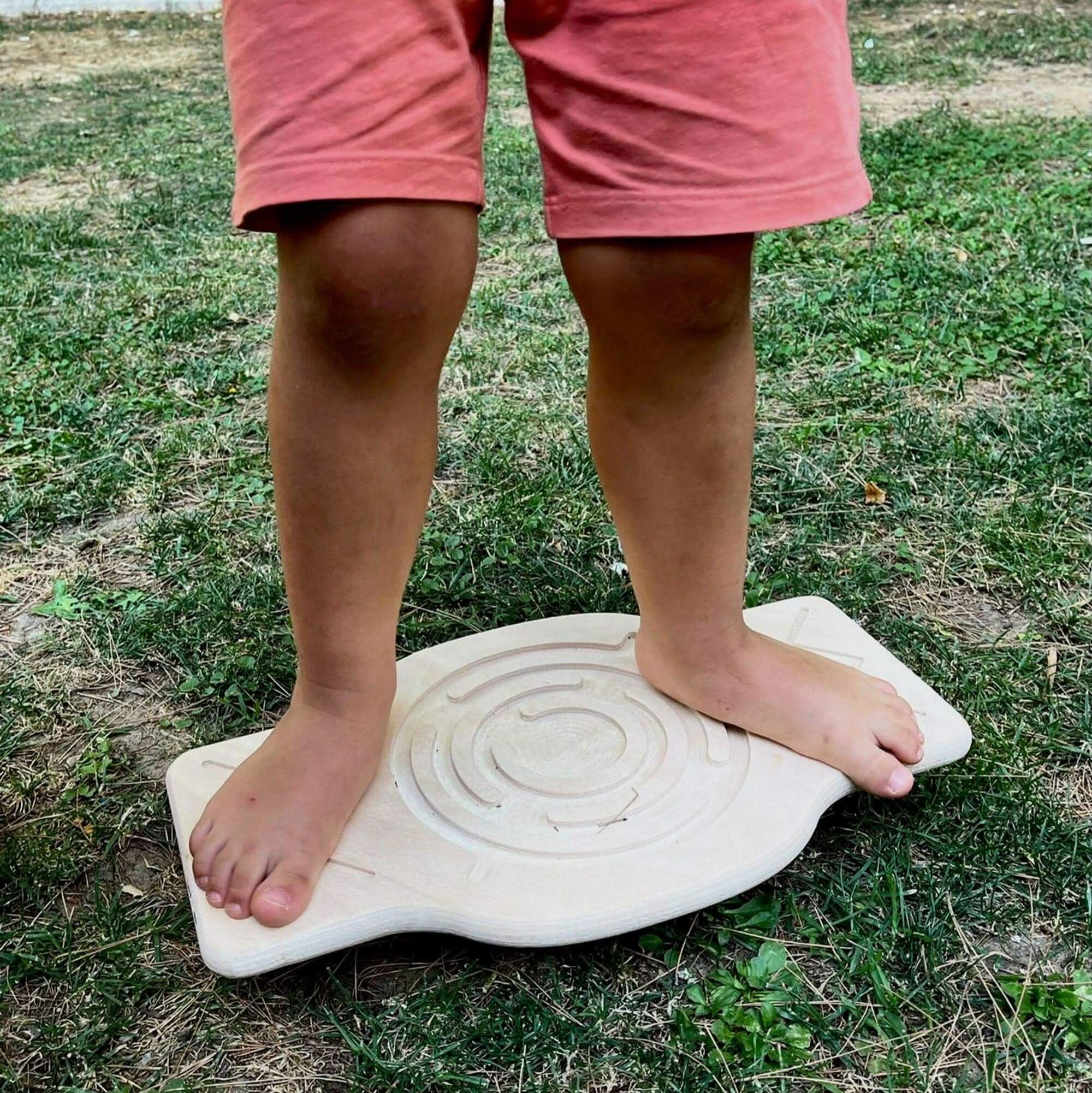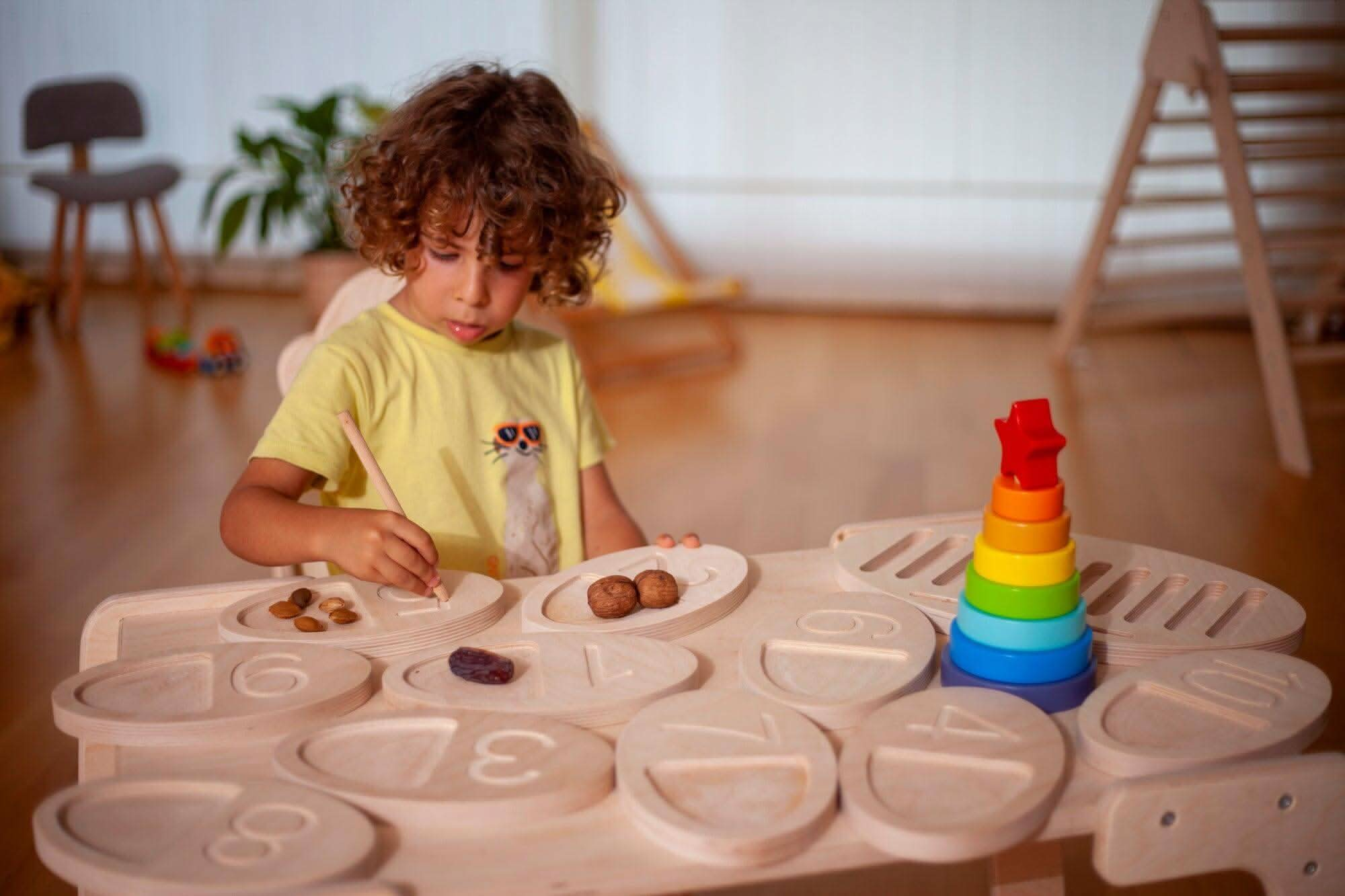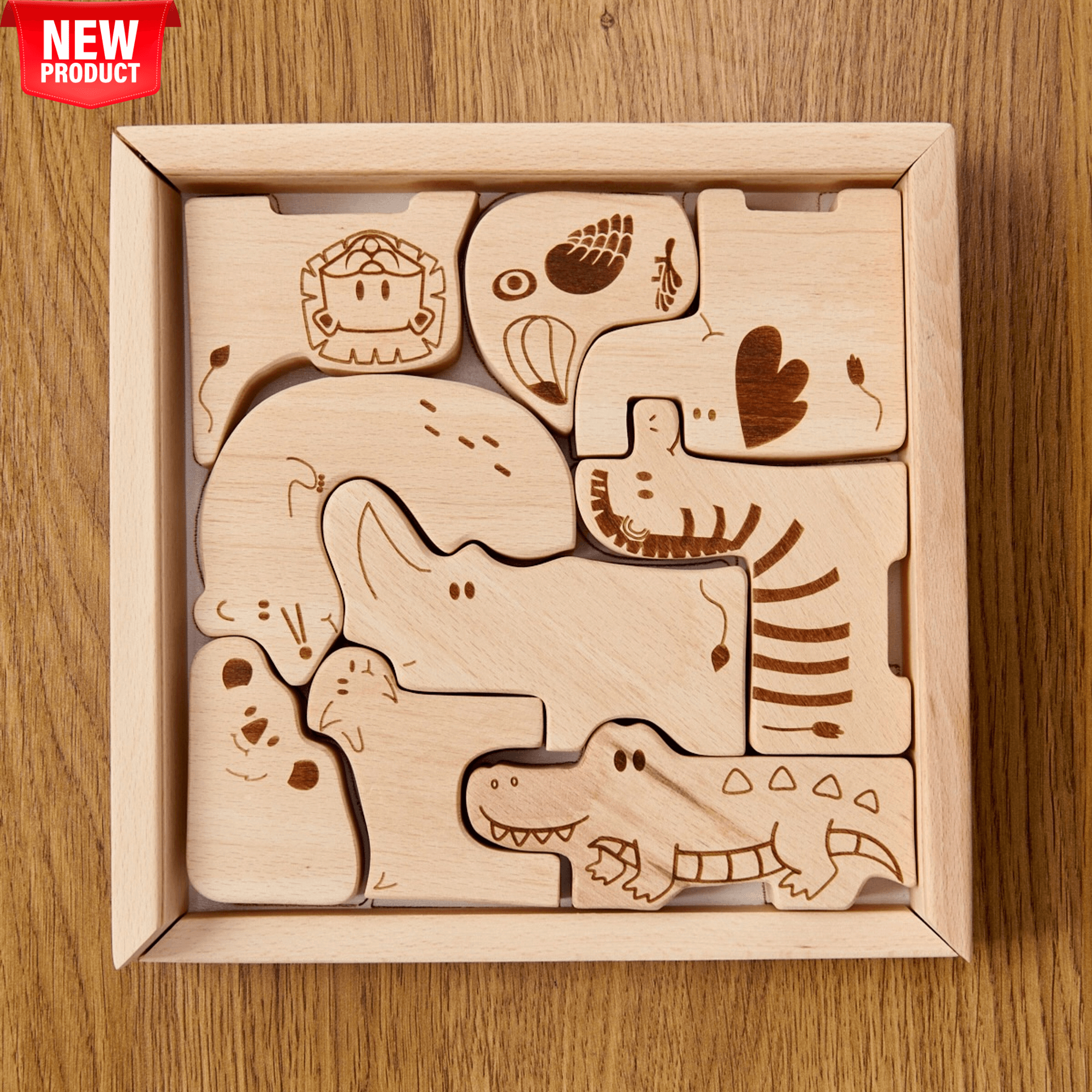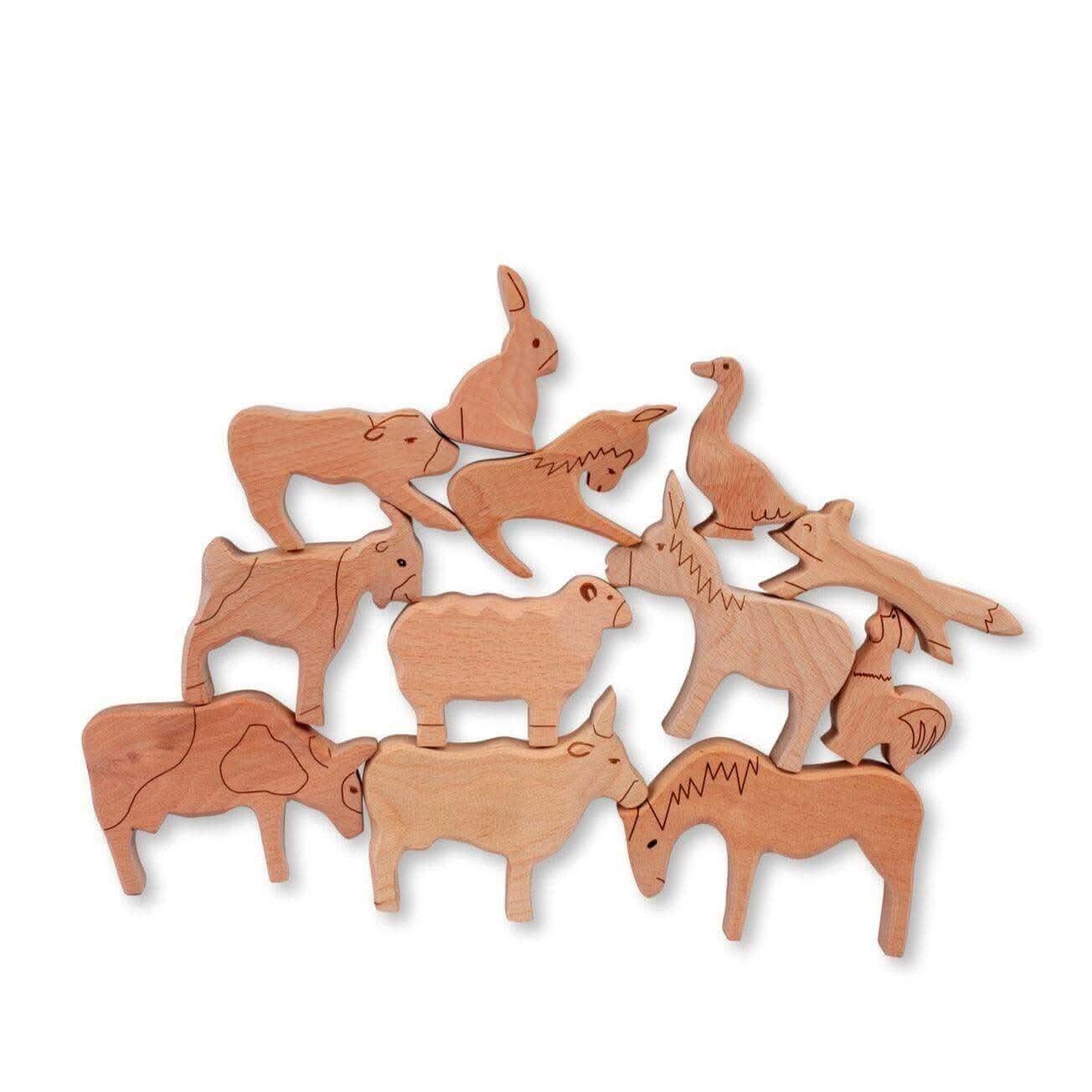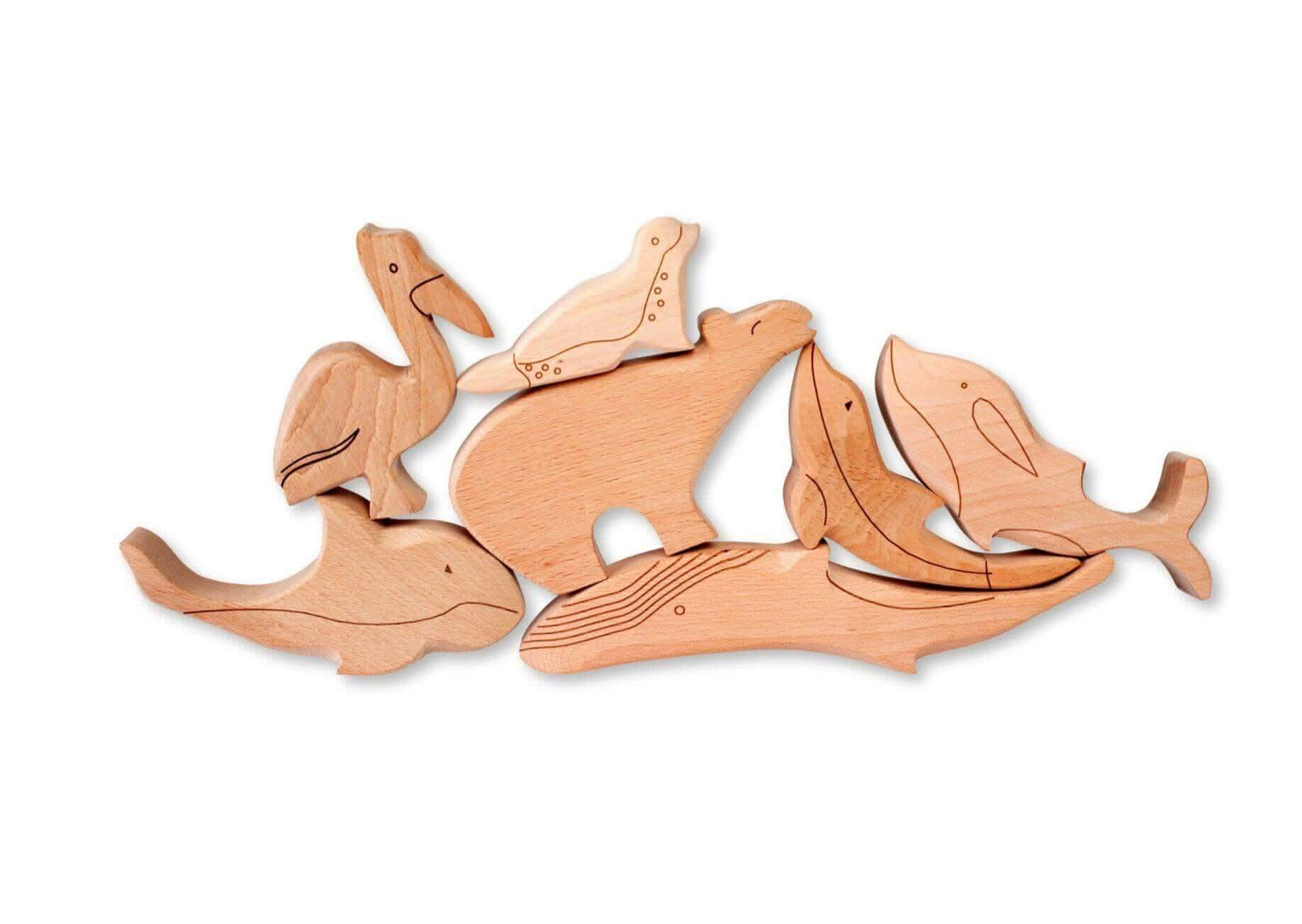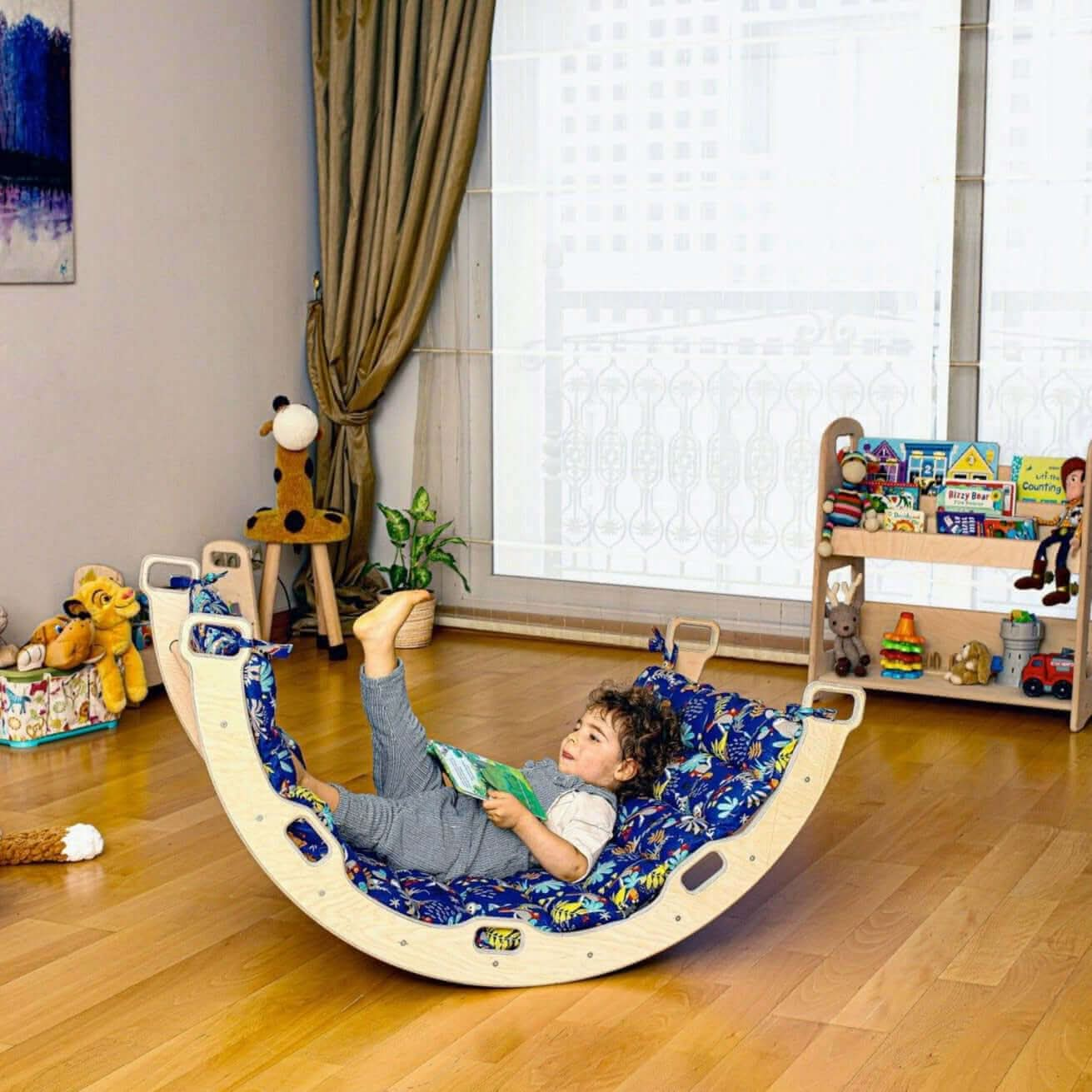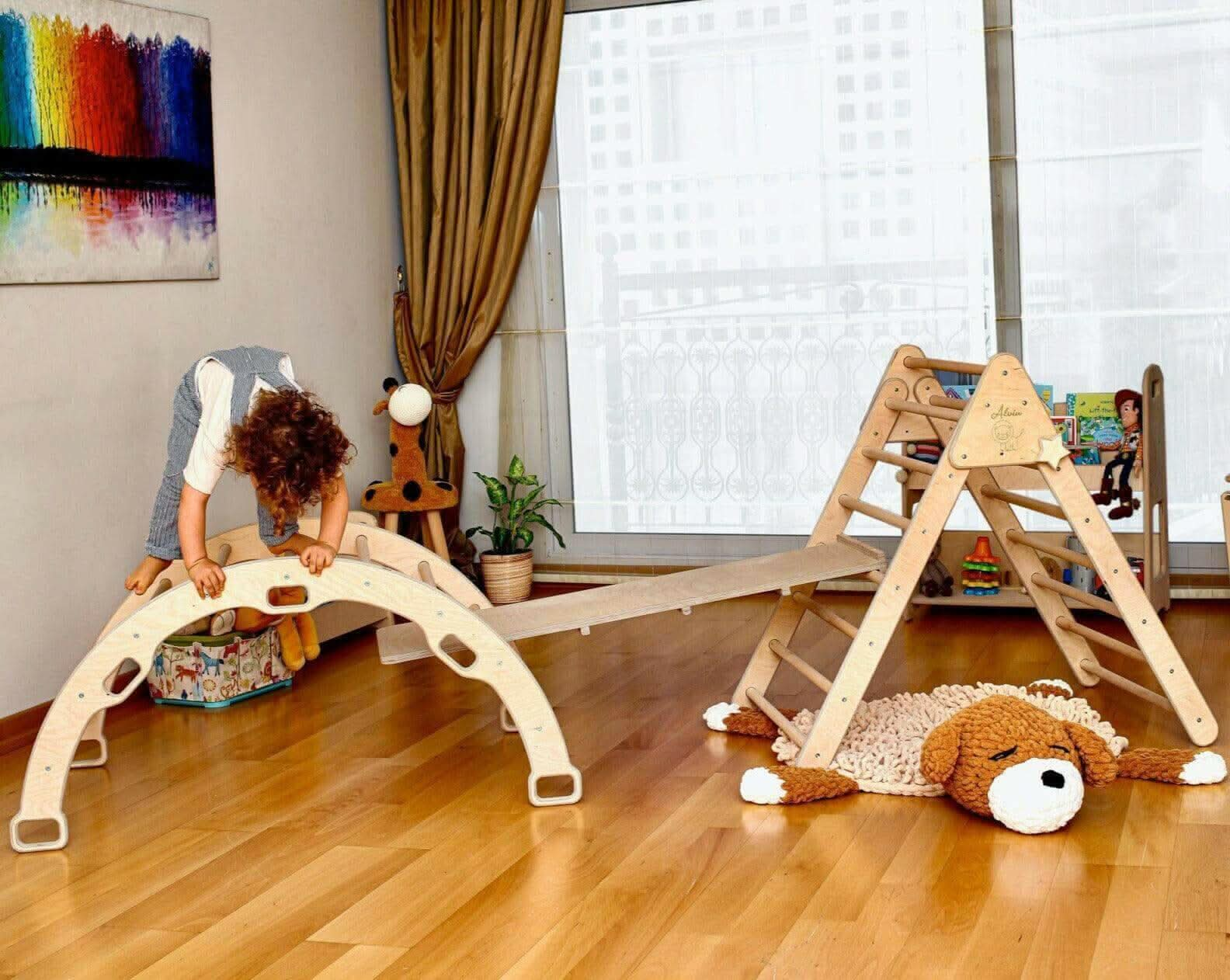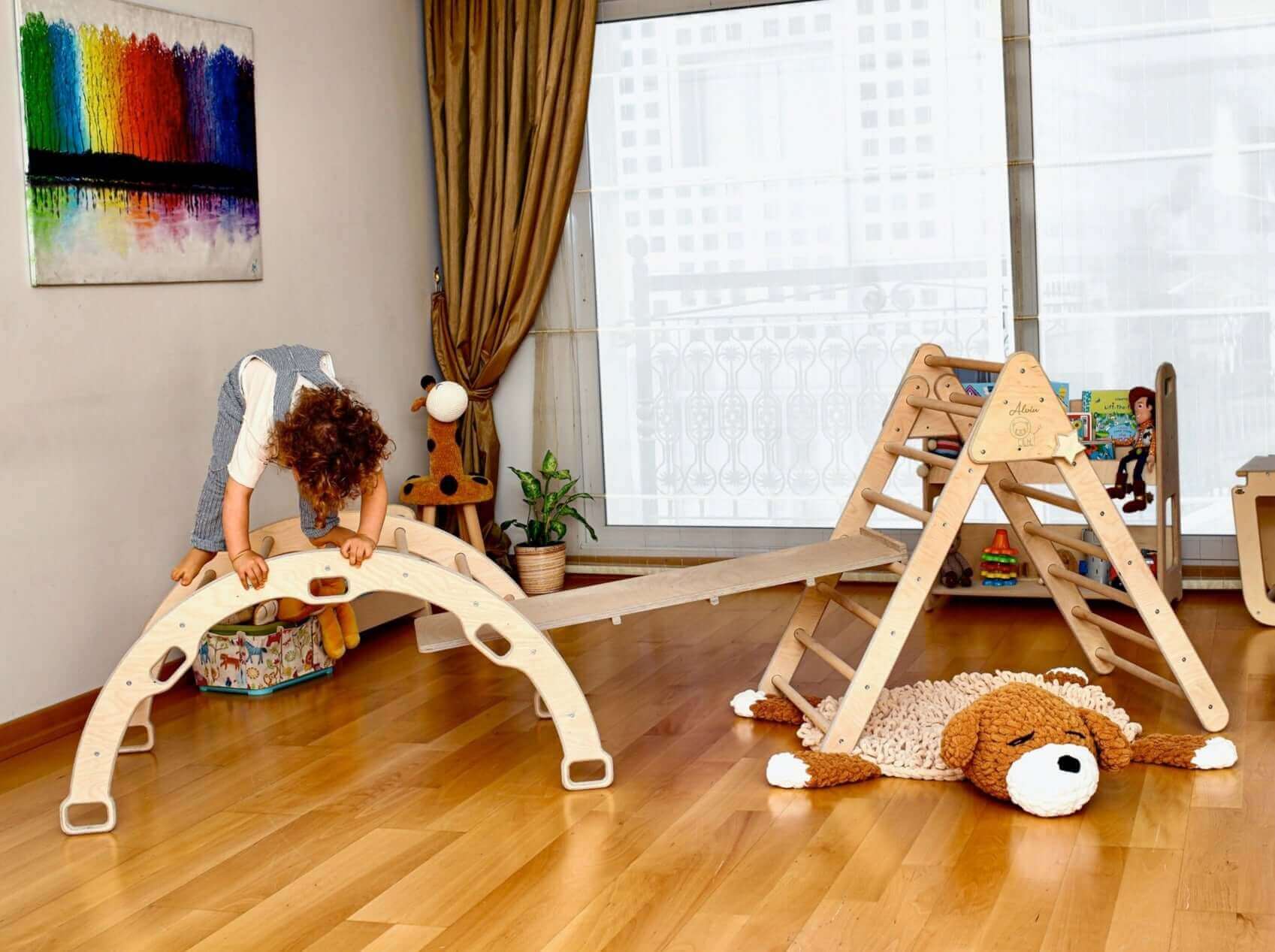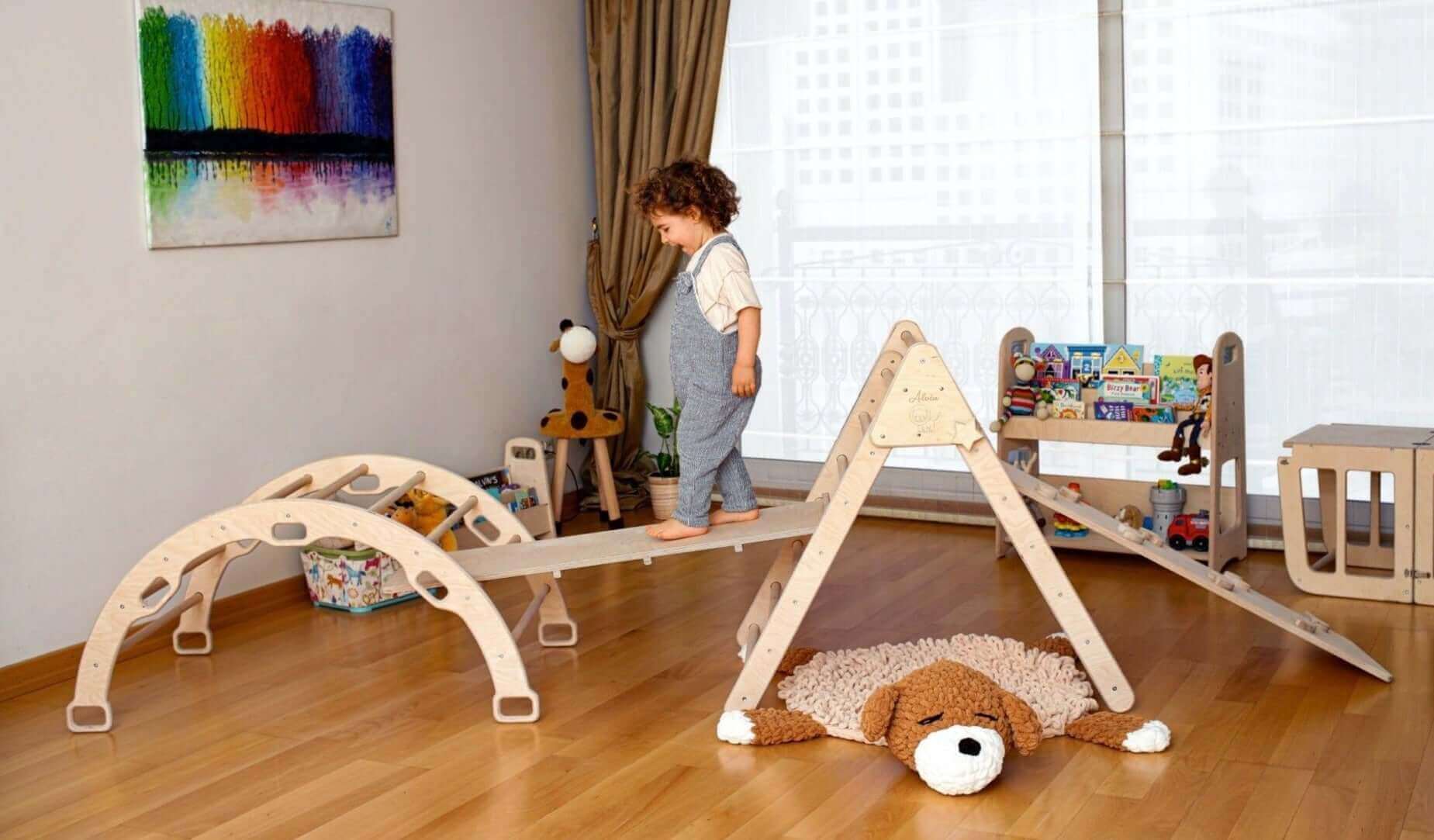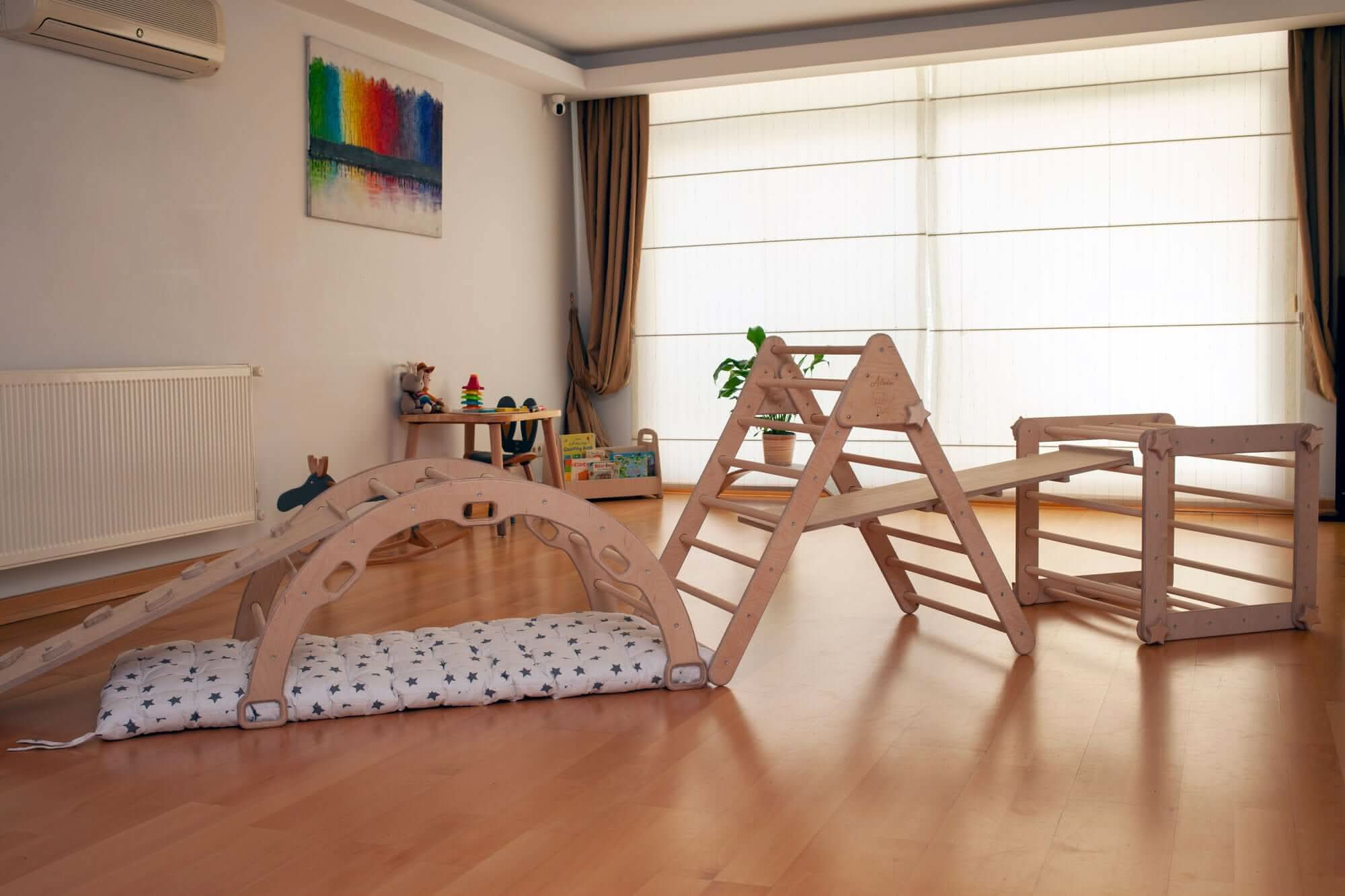
· By halit burak capraz
Creating the Perfect Reading Space: Montessori Bookshelf Organization Tips
Designing an inviting reading space for your child not only encourages a love for books but also fosters independence and creativity. A well-organized reading area with Montessori bookshelves can transform any room into a haven of learning and exploration. In this guide, we’ll explore practical tips on how to create the ideal Montessori-inspired reading nook using child-sized bookshelves that are both functional and aesthetically pleasing.
Understanding the Montessori Approach to Bookshelves
The Montessori Method is not just about cleverly designed furniture—it's a philosophy that encourages autonomy, exploration, and a lifelong love of learning. So, when we talk about Montessori bookshelves, we're diving deeper than just wood and nails; we're stepping into a world where learning is as natural as breathing.
At the heart of Montessori furniture design is the principle of accessibility. This means furniture tailored to children's size, making it easy for them to reach, see, and choose their books independently. Think child-sized bookshelves where a toddler can access their favorite picture book without scaling Mount Everest. The idea is to foster self-reliance by creating an environment tailored to the child's needs.
Why Opt for Open Shelving?
Open shelving units are a staple in Montessori environments and for good reason. They provide visibility and accessibility, essential elements for encouraging independent decision-making among young readers. Open shelves transform book selection into an interactive experience, rather than a daunting task relegated to adults or step ladders.
- Visibility: This approach allows children to see their entire collection at once, making it easier for them to choose based on interest rather than title alone.
- Ease of Access: With low bookshelves for toddlers, reaching their favorite stories becomes second nature.
- Aesthetically Pleasing: Minimalist bookshelves crafted from natural wood are not only eco-friendly but also blend seamlessly into any home library or playroom decor.
The Benefits of Wooden Montessori Shelves
If you've ever had a toddler attempt pulling out a hefty encyclopedia from the bottom shelf only to end up toppling like dominoes (the books and sometimes the toddler), you'd appreciate why wooden Montessori shelves are built sturdy yet lightweight. They offer ergonomic children's furniture design that accounts for both function and safety—a win-win!
Moreover, they're eco-friendly! Sustainable kids’ decor options resonate with today’s growing emphasis on environmental responsibility. With materials like bamboo or sustainably sourced wood being used more frequently, you're not just supporting your child’s development but also contributing positively to our planet.
Sensory-Friendly and Interactive Spaces
The organization of educational shelves for kids should stimulate various senses while keeping clutter at bay. Books displayed with covers facing outward entice young minds much better than spines aligned in soldier-like precision. It’s all about creating uncluttered kids' spaces that encourage exploration over obligation.
In essence, the beauty of Montessori-inspired shelving lies in its simplicity and functionality—qualities that mimic nature itself. After all, even Mother Nature doesn’t hide her best works behind closed doors!
Choosing the Right Montessori Bookshelf
Embarking on the journey to create an inspiring reading space for your little one? The cornerstone of this magical nook is undoubtedly the right Montessori bookshelf. With a plethora of options available, making the right choice might feel like finding a needle in a haystack—or in our case, a needle in a haystack of children's books!
Consideration #1: Size and Accessibility
The hallmark of Montessori design is accessibility. Opt for child-sized bookshelves that your toddler can easily reach. Low bookshelves for toddlers are ideal as they empower children to choose their own books, fostering independence and confidence. According to the Montessori philosophy, when children have easy access to their learning materials, it encourages self-guided exploration.
Consideration #2: Material Matters
When it comes to materials, wooden Montessori shelves are a popular choice due to their durability and aesthetic appeal. Natural wood bookshelves not only add warmth and elegance to your child’s room but also align with eco-friendly principles which are increasingly important in today's world. A study by Green Schools Initiative suggests that using sustainable materials can positively affect children’s health by minimizing exposure to harmful chemicals.
Consideration #3: Design and Functionality
- Open Shelving: Open shelving for kids allows them to see all their book options at once—no more excuses about not being able to find their favorite bedtime story!
- Adjustable Height: As your child grows, so do their needs. Adjustable height bookshelves ensure that your furniture adapts alongside them, providing continuous utility.
- Minimalist Approach: Less is more! Minimalist bookshelves declutter the space while focusing on what truly matters—nurturing a love for reading.
- Safety First: Ensure safely designed children’s shelving units with rounded edges and secure anchoring systems.
A Touch of Humor
No matter how perfect your selection is, be prepared for the inevitable moment when your child will insist on stacking all their books into an unsteady tower just because they can. Remember, every little tumble is an opportunity for growth (and sometimes giggles).
Selecting the ideal bookshelf isn’t just about function; it’s about crafting an environment that enriches young minds and inspires curiosity. By choosing wisely now, you’ll pave the way for countless adventures between those charming book covers!
Organizing Your Child’s Book Collection
Every child deserves a magical reading corner where their imagination can soar, and a well-organized bookshelf is the cornerstone of this literary paradise. When it comes to organizing your child’s book collection, Montessori bookshelves offer an intuitive, child-friendly approach that encourages independent learning and exploration.
Categorize by Genre and Interest
Start by categorizing books into genres or subjects such as animals, fairy tales, educational stories, and more. This not only makes it easier for your child to find their favorite stories but also instills a sense of order and curiosity. Consider using color-coded labels or simple icons to help them navigate through the different categories.
- Animals: Include books about wildlife and pets.
- Fairy Tales: Classic tales that enchant young minds.
- Educational: Books focused on learning numbers, letters, or science.
Embrace the Joy of Rotation
To maintain freshness in your little reader's library, consider rotating books monthly. This keeps the collection engaging without overwhelming your child with too many options at once. Plus, you’ll have an excuse to unearth those forgotten treasures hidden in storage!
Create a Showcase Display
A Montessori bookshelf isn’t just functional; it’s also about visual appeal. Display book covers facing outward on wooden Montessori shelves—this not only attracts your child’s attention but also allows them to select books based on visual interest. An aesthetically pleasing setup might even encourage reluctant readers to pick up a book!
Add Interactive Elements
Liven up the reading nook with interactive elements like a small finger puppet theater or felt boards for storytelling. These additions complement the minimalist bookshelves beautifully and foster creativity and narrative skills.
Simplify with Accessibility in Mind
The beauty of child-sized bookshelves lies in their accessibility. Place heavier books on lower shelves so young readers can safely access them without any mishaps. Choose sturdy shelves made of natural wood for durability and eco-friendliness—a sustainable option that aligns with Montessori principles.
An organized bookshelf is more than just neat stacking; it's an invitation to explore new worlds and ideas. With these tips in hand, you’ll be able to create an enchanting space that fosters lifelong learning and cultivates a love for reading from an early age—a true gift for any growing mind!
Incorporating Multifunctional Furniture
When it comes to creating an inviting and productive reading space for your little one, incorporating multifunctional furniture is a game-changer. Not only does it maximize space—something crucial in today's minimalist living quarters—but it also supports the Montessori philosophy by fostering independence and creativity in children.
Why Choose Multifunctional Furniture?
- Space-Saving: In many homes, space is at a premium. Multifunctional furniture, such as adjustable-height bookshelves or ergonomic children’s furniture designs, can serve dual purposes, reducing clutter while optimizing the available area.
- Promotes Independence: By choosing child-sized bookshelves and versatile storage solutions, you empower your child to easily access their books and toys. This aligns with Montessori's emphasis on self-directed learning.
- Sustainable Choice: Environmentally-friendly options often come with multi-use features. Imagine a wooden bookshelf that doubles as a drawing table or an incognito toy storage unit!
Practical Tips for Incorporation
Here are some practical tips to help you integrate multifunctional furniture into your child’s reading space:
- Think Vertical: Opt for vertical shelving units that offer adjustable shelves. This allows you to customize the height as your child grows, making the most of every inch of available space.
- Diverse Functionality: Consider shelves that convert into desks or tables when needed. These versatile pieces can transition from morning reading sessions to afternoon crafting activities seamlessly.
- Aesthetic Appeal: Choose pieces made from natural wood materials to create a calming environment conducive to focus and relaxation. Natural wood bookshelves not only add timeless elegance but are also durable.
An excellent example is using Montessori-inspired shelving units which can double as educational shelves for kids—ideal for storing both toys and books in an organized manner. Embrace innovation; after all, even toddlers appreciate good design!
If you're interested in learning more about how Montessori furniture can elevate your child's development, visit our detailed guide on this approach here.
The beauty of multifunctional furniture lies in its ability to cater to various needs while maintaining an organized, accessible environment; ultimately enhancing not just aesthetics but also your child's learning journey.
Nurturing a Love for Reading Through Creative Design
Creating a reading nook that ignites curiosity and passion for books can be as enchanting as diving into a storybook world. By reimagining how we organize our children's book collections, we can transform their reading experiences into magical adventures. The key lies in using Montessori bookshelves that embody both functionality and aesthetics.
Embrace the Magic of Accessibility
- Child-Sized Bookshelves: Opt for low, toddler-friendly shelves that invite children to explore. These shelves should be at a reachable height, encouraging autonomous selection of books and fostering independence.
- Open Shelving for Kids: Open designs not only make books easily accessible but also visually appealing, turning book spines into an intriguing display of stories waiting to be discovered.
The Beauty of Minimalism
Less is more when it comes to creating an uncluttered kids' space. Montessori principles advocate for simplicity and order, making minimalist bookshelves a perfect choice. By reducing visual clutter, children can focus better and feel less overwhelmed. This approach is also beneficial when teaching them organizational skills early on.
Sustainable Choices for a Greener Future
If you're concerned about the environment (and who isn't these days?), consider investing in eco-friendly Montessori furniture. Natural wood bookshelves not only blend seamlessly with any decor but are also crafted from sustainable materials that are kinder to our planet.
Incorporating these design elements into your child's reading area doesn't just enhance their literacy skills; it cultivates an intrinsic love for reading by making each visit to their book corner an exciting journey. Whether you’re inspired by nursery bookshelf ideas or seeking creative child room decor, remember: a thoughtfully designed space can spark infinite imaginations.
A Little Humor Never Hurt Anyone…
Of course, crafting the perfect Montessori-inspired shelving might seem like scaling Mt. Everest at first glance! But fear not—start small and let your child’s interests guide you. Before you know it, they’ll be the next Dr. Seuss or J.K Rowling…minus the deadlines!
The Role of Safety in Children's Furniture Design
When it comes to creating an inviting and educational space for our little bookworms, safety should never be considered an afterthought. The journey to crafting child-friendly environments begins with choosing the right Montessori-inspired furniture that marries functionality with safety features. After all, even the most engaging reading nook loses its charm if it isn't safe for young explorers.
Key Safety Features to Consider
- Rounded Edges: A staple in ergonomic children’s furniture design, rounded edges minimize the risk of injuries. This is especially crucial for toddlers who are just getting their sea legs.
- Non-Toxic Materials: Opt for wooden Montessori shelves made from natural materials free from harmful chemicals. Not only do these eco-friendly Montessori furniture options contribute to a healthier planet, but they also ensure your child isn’t exposed to volatile organic compounds (VOCs).
- Sturdy Construction: Nothing ruins a reading session faster than a toppling bookshelf! Investing in well-constructed, stable furniture ensures peace of mind as kids reach for their favorite storybooks.
- Low Height & Accessibility: Consider child-sized bookshelves that allow easy access while fostering independence. With low bookshelves for toddlers, kids can safely access their collection and learn the joy of organizing.
A safe reading space goes beyond mere aesthetics; it's about creating an environment where children feel secure and free to explore their imaginations. This emphasis on safety not only supports physical well-being but also nurtures confidence and autonomy—a core tenet of Montessori principles.
The Humor Behind Safety
While ensuring safety might seem like a chore akin to wrestling a toddler into bed at night (we've all been there!), remember that it's also about enabling freedom within boundaries. Think of it as setting up bumpers in a bowling alley—sure, there might be a few initial bumps (and amusingly misguided attempts), but ultimately it leads to success without the potential tears.
If you're curious about more tips on how Montessori furniture can enhance your child's learning environment safely, check out our comprehensive guide on creating functional yet secure spaces for kids: [The Ultimate Guide to Montessori Furniture and Play Equipment for Holistic Child Development].
Conclusion: Crafting an Inspiring Reading Space
Creating the perfect reading space isn't just about arranging Montessori bookshelves. It's about cultivating an environment that inspires curiosity, fosters learning, and offers a sanctuary for young readers. By thoughtfully integrating elements of Montessori design into your child's reading nook, you're setting the stage for a lifelong love of books.
Here are a few key takeaways to keep in mind:
- Accessibility: Ensure your child can easily reach their favorite stories by using child-sized bookshelves. Low bookshelves for toddlers create an inviting atmosphere and empower them to choose their next adventure independently.
- Organization: Keep it simple yet effective. Incorporate open shelving for kids to encourage them to engage with their books regularly. A minimalist approach reduces clutter and highlights each book's value.
- Aesthetics: Choose natural wood bookshelves or eco-friendly Montessori furniture that blend seamlessly with your home decor while providing a sensory-friendly experience for little hands and eyes.
- Functionality: Consider adjustable height bookshelves which adapt as your child grows or explore innovative toddler bookshelf designs that combine form and function, such as interactive playroom storage solutions.
Spearheading these ideas doesn't necessarily demand a full-blown HGTV makeover. You can start small with DIY Montessori shelves or space-saving kids furniture that fits snugly into any corner of your home. Remember, it's about crafting a personalized space where stories come alive, much like opening the door to Narnia—or at least the closet under the stairs! With creativity and attention to detail, you can transform any room into a literary wonderland.
If you're looking to delve deeper into how Montessori principles can enhance your child's environment, check out our comprehensive guide on the ultimate guide to Montessori furniture and play equipment for holistic child development. Happy reading adventures await!

